a blog about learning & translating Korean

Tips for improving Korean essay writing

After more than a year of attending advanced Korean classes and regularly writing and reviewing 500-800 character essays with my teacher, I’ve accumulated a few useful tips for improving long-form writing that I thought I’d share here.
I’ll preface this by saying few people write well in any language, even among native speakers. I’m a writer and storyteller in both my professional and personal life and I know just how hard it is to build compelling rhetoric using effective, engaging language on any topic. So, following these “quick tips” won’t make you a good writer in Korean — that will take years of practice reading and writing, just as it would in English. But it may help you get started on the road to sounding more natural.
Caveat : This is only one language learner’s experience (mine) and one language instructor (my teacher)’s advice, so take with a grain of salt.
Master written language
This means practicing and getting comfortable with plain speech. Plain-style Korean, or 해라체, is used in books, newspapers, blogs — basically any form of writing where you’re not directly addressing someone else. For example, you’d use plain style to write a blog post in Korean, but use proper politeness (i.e. -요 or -ㅂ니다) levels when responding to comments. Sentences in plain-style Korean end with -(ㄴ)다 (present/future) or -ㅆ다 (past).
There are a number of useful textbooks out there that cover Korean grammar; I’m personally a fan of 빈도별 토픽 for more advanced learners and the Integrated Korean series for beginners and intermediate learners. When going through these books, keep in mind that not all verb endings are appropriate for written Korean. Endings like -지요 and -잖아요, for example, only make sense when you’re talking to someone else.
Use inductive reasoning
Obviously not a hard and fast rule (depends on the discipline, writer’s style, etc.), but after reading a number of Korean op-eds and personal essays, the biggest difference between Korean and English essay writing that I’ve noticed is the underlying logic of the work.
Korean essays are mostly built on inductive reasoning: they start out with anecdotes, examples, and research to draw the reader step-by-step to the main point of the essay. If you’re reading a long opinion piece in Korean, you might make it through 50% or more before you realize what exactly the author’s trying to say.
This is counter to the typical “five paragraph essay” taught in American high schools, where you’re told to state a main point for each paragraph and then support it with evidence (more deductive than inductive reasoning).
Tip! I’ve found that because of this logic structure, skimming long chunks of Korean prose — especially during TOPIK — is challenging for me. If you’re pressed for time, read the last couple sentences of every paragraph to get a decent tl;dr.
Memorize transition words and phrases
These are words like 그런데, 그리고, 게다가, 반면에, etc., that link one sentence to the next or one paragraph to the next. When you’re reading essays, news articles, or even TOPIK passages, take a second to identify and write down these transition words/phrases. Memorize them and practice using them in your own writing, so you won’t default to the boring ones I listed as examples above.
Put the most important part of the sentence first
One of my favorite things about Korean writing is the flexibility of word order within a sentence. That said, I often get told by my teacher to not be so careless about it when writing essays. A writing tic of mine, for instance, is to include every relevant detail that I possibly can into a relative clause that modifies the topic or subject of my sentence; that means my sentences are “top heavy” with the most important part usually coming near the end. In longer compositions, though, it’s important to make sure your key point shows up at the beginning of the sentence for clarity.
For example, take a look at these two sentences. The first is what I wrote and the second is a revision.
(1) 마지막으로 직장 관련 이야기가 듣기 싫다는 대답을 선택한 여성들에 비해 2배 이상 많은 남성들이 있다는 결과가 나왔다.
(2) 마지막으로, 여성들에 비해 2배 이상 많은 남성들이 직장 관련 이야기가 듣기 싫다는 대답을 선택한 결과가 나왔다.
I was trying to describe that, according to the results of the given survey, more than twice the number of men versus women said they did not want to discuss work [with their extended families during the holiday]. In sentence (1), the key point ‘여성들에 비해 2배 이상 많은 남성’ shows up at the end of the sentence; in sentence (2), it shows up right after the transition word.
Use! The! Right! Particles!!
Believe me when I say that it is worth investing time into understanding the difference between topic particles (은/는) and subject particles (이/가). For a lot of beginners, this is one of the most difficult concepts to grasp, especially if English is your native language. If you’re only writing a couple short sentences at a time, to a limited (!) extent, you can get by mixing up the two without dire consequences.
For example:
(1) 그 남자 는 나를 좋아한다고 고백했다. (2) 그 남자 가 나를 좋아한다고 고백했다.
Both sentences have differences in nuance but more or less mean the same thing.
When sentences get long with different topics, subjects, and clauses, using the wrong particle can really mess up the meaning of your sentence. And when you’re introducing different points in an essay, mastering 은/는 and 이/가 will help direct the logical flow of your writing and lend it clarity. The best way to grasp particles? Write a lot, but don’t just write disparate sentences. Write a paragraph or two on one idea and then have your writing reviewed by a native speaker.
Synonyms are your friend
This is good writing advice no matter what language you’re writing in. No one wants to read the same adjective or verb over and over again, so it’s good to pay attention to different ways to say the same thing. This is particularly important, I think, for the analytical writing part of TOPIK, which asks you to describe the results of a survey or research study. You’ll be using a lot of phrases like “X increased by Y%” or “A decreased by B%” or things like “it was revealed that XX,” “the results showed ,” “the participants chose , ” etc.
Tip! Compared to the longer essay in TOPIK II, the analytical essays are actually where you can improve your score the fastest, in my opinion. One easy way to do that is by diversifying your sentences with different synonyms and phrases related to analysis and trends. On one of my early practice tests, I used the word 증가하다 three sentences in a row — don’t do that.
Last but not least: read actively
An obvious one, but worth mentioning. Now, when I read non-fiction in Korean, I don’t just read for comprehension. I read for writing style. And I mean, I really break down the structure of the composition. I start out by picking out where the main idea shows up in each paragraph and then jot it down. Then I try to pay attention to how the sentences are connected to one another, noting specifically how the author shifts topics and subjects from sentence to sentence and how transition phrases/words help build the logic of the narrative. And then I try putting in any new words and sentence structures/phrases I’ve learned into practice.
In order to build your vocabulary, it’s important to read widely. But in order to become a better writer, I think it’s important to read closely .
Closing thoughts
I think being able to write naturally, using standard grammar, is an important tenet of fluency. But I don’t think you have to be a “good” writer to consider yourself fluent — though, of course, it depends on what your ambitions and/or goals are.
In English, writing is like breathing for me. So it’s important to me that I can write something that would be considered generally good writing in Korean, not just comprehensible or “good for a foreigner.” That’s what I’m working toward, at least.
To that end, I do have a ((new)) blog in Korean, up on the interwebs somewhere. I’m waiting until I write a few more posts before I officially share it here, but if keep your eyes peeled if you’re interested!
Share this:
10 responses to “tips for improving korean essay writing”.
what do you think about the hanguel-only thing as it relates to writing?? do you find it limits your writing ie changing a word because there’s a lot of homophones?
That’s an interesting perspective. I don’t think I’ve ever felt limited by Hangeul as a writer. If I’m worried about being misunderstood because of a homophone issue, I just look up the hanja and put it in parentheses. As a reader, though, I can see how Hangeul might seem limiting, e.g., looking up hanja is an extra step I have to go through to understand whatever I’m reading, or worse, if there is no hanja, I expend more mental energy trying to figure what the author means.
Like Liked by 1 person
also have you noticed bad writing in Korean in korean newspapers, articles etc now that you’re more skilled in writing?? Or are there certain things you see korean writers do that annoy you ??
I was reading the japanese internet about reading korean and of course there’s negative stuff. I would love to hear your thoughts about it. if you use rikai-chan or some pop-up dictionary i’m sure you can understand it… i’ll paste it…
漢字を無くしたから意味を文字で伝えるのが難しい なので平易な言葉で伝えないと読み手に書き手の意思を伝えられない 冗長になり論点がぼけるのはハングルの特徴だから仕方ない
書くための文字→ハングル 読むための文字→漢字
これが言語や単語にまで影響及ぼしてるだけ
++ 南朝鮮の新聞記事は長文駄文意味不明が多いよね 文章「表現力」以前に、思考回路に何かしらの障害がありそう 目の前の事象を「しあわせ回路」や「反日回路」に入力し、「願望」の粉かけて、ビビンパのようにまじぇまじぇしないとあんな文章は出力できないよ
なんかの調査で韓国人は平均IQが高いと言われてホルホルしてたけど (1位香港 2位韓国 3位日本・・・・) IQテストのためのテスト勉強させてる国がどこかにあるとかw IQ高くてもあんだけ非論理的だし 自前でロケットさえ飛ばせない ノーベル賞なんか皆無だし(金で買える平和賞は除く) ああ、むしろIQなんて全然意味ねえじゃんて気づかせられた件でした
++ 韓国の新聞の社説を読んでると、論旨が不明瞭で様々な故事を出した後に何の論理的な展開も無く○○が悪いという結論で終ってる事が多くて何を伝えたい文章なのかさっぱり分からない事が多い。
普通の新聞記事でも、感情的な言い回しが多くて、記者はニュースを伝えたいのか、怒り嘆きを伝えたいのかよく分からない文章になってる事が多い。
そんな文章を日常的に読んでいたら、文章を読むのが苦手になっても不思議ではないし、論理思考が出来なくなっていくのも無理は無い。
++ だからなのか、韓国の新聞て論説委員からして文章力がない。ただダラダラ長いだけで何が言いたいのかさっぱり伝わらない。記事タイトルと書いてる内容がズレてることも多々ある。こんなレベルの低い文章ばかりなのに、読解力を求めらても何の意味もないから、そのままで良いと思う。
+ 韓国の新聞のコラムでも 読みたくなるような、読ませる文章ではないよね。ドヤ顔でどこかの国の引用から始まるのが ほとんど。 ++
童貞 同情 同志 冬至 史記 詐欺 紳士 神社 郵政 友情 首相 受賞 火傷 画像 市長 市場 風速 風俗 映画 栄華 戦死 戦士 歩道 報道 犬喰 見識 日傘 量産 数値 羞恥 お腹 お船 烈火 劣化 主義 注意 読者 独自 団扇 負債 停電 停戦 大使 台詞 諸国 帝国 諸島 制度 声明 姓名 無力 武力 全員 田園 定木 定規 全力 電力 代弁 大便 捕鯨 包茎 地図 指導 素数 小数 対局 大国 誇張 課長 インド 引導 初代 招待 朝鮮 造船 駅舎 歴史 発光 発狂 定額 精液 火傷 画像 反戦 反転 反日 半日 武士 無事 大便 代弁 無力 武力 電車 戦車 連覇 連敗 恨国 韓国 祈願 起源 競技 景気 放火 防火
ハングルでは全部同じ。 同音異義語というのみならず表記も全く同じ。 前後の文脈で区別するしかない。
例: 釣船の操船で有名な朝鮮人たちの祖先が造船した商船に率先して乗船し商戦に挑戦 ↓ チョスンのチョスンで有名なチョスン人たちのチョスンがチョスンしたチョスンにチョスンしてチョスンしチョスンにチョスン
http://u1sokuhou.ldblog.jp/archives/50389367.html
kaikaiの他所でも書いたが、 文章のプロである朝鮮日報・中央日報・等々の文章が下手で驚く。 コラムを書く役職の有る記者ですら、無駄な前振り、論点が行方不明など酷い。
さらに酷いのは新聞記者ではない何かの教授や研究員・学者の類が描く時だ、 目が回るほどに下手だ。 日本のそこいらの素人のblogの方が上手い。
他の国ではそういうことは無い、朝鮮だけの大きな特徴でとにかく文章が下手糞だ。 翻訳の問題ではない。 文章の構成能力や論理的な組み立てが出来てない性質のものだ。
一言で言うと「馬鹿」としか思えない。 いや、馬鹿なんだろう。
62名無し1年前ID:QxMDg2NTE(1/2) >>59 >>58 >>60 向こうの記事読んでそれ感じる。漢字捨てたせいか専門的な単語を使うのにためらうというか使えないというか。そのために意味を分かりやすくしようと変な例えを出してやたら文章が長くなってしまう。 その変な例えの殆どが詩的なんだが自分からすると状況が一致しないか書いた記者自身の文章酔ってるかのように感じてしまい気持ち悪い。
起承転結の起に入るまでが長かったり承が訳が分からなかったり転に至っては絶対間違ってない自信なのか存在しない、それとなぜかなんの脈絡もなく日本が出てきたりと。 ここに来る韓国人の文章は機械翻訳ではあるが変な比喩が無く言いたい事が分かる読みやすい文章なので全然記者よりも文章が優れてるように見える。
i FORGOT THIS この人の発言は、韓国人の文章(新聞記事等)に通じるものがありますね。言い訳と希望的観測を交えて、整合性のない事を平然と悪びれる事なく(息を吐くように)言う。
2018/04/02 [05:52:03] jk 一方、韓国の新聞記事は、的を得ているとは思えない故事や格言、故人の言を引いて、中身の薄い内容を難しく伝える。
Whoops your last two comments got flagged as spam so I’m seeing them just now. Hmm, I wouldn’t say that I’m skilled enough to differentiate between good and bad journalistic writing just yet. I /can/ tell the skill difference between, say, a newbie writer who publishes web novels on Naver and more experienced novelist.
In terms of annoying things Korean writers do… hm… I don’t think I’m widely read enough to make too many sweeping judgments here but I have noticed that in a lot of literary writing, Korean authors tend to use adjectives that are near synonyms of each other, one after the other in the same sentence. e.g. “her face was pale and white” or “the rain fell heavily and strongly.” Sometimes I think the slight nuance helps add atmosphere but when it happens sentence after sentence it becomes tedious to read (and translate). The other thing I personally like in my fiction is varying sentence lengths. It changes up the . cadence of the prose and keeps things interesting. I find that a lot of Korean sentences are similar in length (longggg) one after the other.
Interesting… I’ll take a look at those Japanese comments (let’s see how far I get before the Kanji kicks my ass and I need to use a dictionary lol). Thanks for sharing!
WelL theres lots of cool popup dictionaries to save you time like rikaichan and yomikun.
From my limited experience of reading Korean articles I have to agree with the Japanese people lol. They were just describing what I was thinking but wasn’t confident enough to say since reading Korean isn’t that comfortable at times. Like you I don’t think I’m good enough to decide whether someone’s writing is bad or good
here’s one of the original sites in case you were curious https://kaikai.ch/board/2377/
韓国の新聞メディアや教授のコラムって、その論文全体を通して主張したい1つの軸が不明瞭で、一貫性がなく、要点がないんだよね。 だから「韓国人の書く文章は無駄に長い」「読むだけ無駄だった(重要な事が書いてない)」という感想持つ日本人は多い。
“起承転結”あるいは“起転結” これを韓国人は文章として成立させてない。 日本だと、大学で論文の書き方は骨身に叩き込まれるんだけど、韓国は何をやってるんだろ?
this is post 60 韓国の新聞のコラムとかって 内容の核心に入るまで長くて 余計な知識披露が多い、文字スペース 考えろよ。
they were the posts that post 62 responded too.
I love this! My long term goal is also to write as well and with as much confidence in Korean as I do in English, so this was extremely helpful. Can’t wait to check out your Korean-language blog — I started one a few months ago but only have three posts so far ㅎㅎ 화이팅!
I’m just a beginner but I think these are very valuable advice even for beginners to keep in mind as they progress.
The point about plain style especially hit home for me, because for the longest time I didn’t even know it existed. Every single textbook I have only ever mentioned -이에요/예요 and -(스)ㅂ니다. This made it very difficult to search for anything online as most blogs and websites are written in plain style, and I wasn’t able to read even the simplest stories written in Korean because I was not familiar with the endings.
I wish textbooks would at least mention the existence of this style sooner.
Like Liked by 2 people
I’m so glad found the post valuable, Luna! Thanks for reading. :)
Leave a comment Cancel reply

- Already have a WordPress.com account? Log in now.
- Subscribe Subscribed
- Copy shortlink
- Report this content
- View post in Reader
- Manage subscriptions
- Collapse this bar
|
Students of Korean at Boston University are highly encouraged to write short passages and essays appropriate to their level of study. Writing Korean not only helps students’ Korean literacy skills but also enhances students’ creative and logical thinking abilities through reviewing and critiquing on social and cultural issues. The following essays are some samples from the students in my past Korean classes. These examples are taken directly from students' actual work and demonstrate great efforts in writing. However, naturally the sample essays may include possible grammar mistakes and non-native style of expressions.
|
- Learning Package
30 Useful Korean Transitional Phrases For Essay Writing
Are you studying for an upcoming exam in your Korean class or the TOPIK exam that includes essay writing?
If you are at an intermediate to advanced level, you should become familiar with some Korean transitional phrases to make your paragraphs more interesting to read. A transitional phrase can be used to make your message transition smoothly from one sentence to the next.
If you just write a string of sentences without any transitional phrases, your essay can end up sounding awkward and robotic without a natural flow.
In this article, I have compiled a list of 30 Korean transitional phrases that will prove very useful for you to have in your writing arsenal.

Korean Transitional Phrases
| 그래서 | And |
| 그러나 | But |
| 그렇지만 | But |
| 하지만 | But |
| 그래도 | Even so, |
| 이처럼 | As such, like this, to this extent |
| 반면에 | On the other hand, |
| 오히려 | On the contrary, |
| 따라서 | Therefore, accordingly, |
| 특히 | Especially, in particular |
| 또한 | Additionally, |
| 게다가 | In addition to that, |
| 그뿐만 아니라 | Not only that, |
| 그 외에도 | Besides that, |
| 그 결과 | As a result, |
| 다시 말해서 | In other words, |
| 만약 | If for any reason |
| 그렇다면 | If that is the case, |
| 그때 | At that time, |
| 그 당시 | Around that time, |
| 그 후에 | Thereafter, |
| 그 전에 | Before that, previous to that, |
| 우선 | First (before anything else), |
| 예를 들어 | As an example, |
| 무엇보다도 | Above all else, |
| 물론 | Of course, |
| 당연히 | Naturally, |
| 따지고 보면 | After all, logically speaking, arguably, |
| 어떻게 보면 | Depending on how you look at it, |
| 그럼에도 불구하고 | In spite of that, nonetheless, |
Below are some examples of these phrases I have found in recent articles that appeared in Woman Sense , a women’s magazine in Korea.
I have underlined and highlighted where transitional phrases are used, but you can use the links provided to read through the rest of the articles to find more on your own:
From Woman Sense magazine article about Taiwan (2/16/2020):
이처럼 대만에서 채식이 보편화된 이유는 종교와 관련이 있다. 대만의 일류 호텔에서 채식 케이터링을 담당하는 요리사 임언보 씨는 “내가 채식에 관심을 갖게 된 이유는 종교 때문”이라며 “채식 요리를 업으로 삼고 있는 나 역시 채식을 하고 있다”고 말한다. 현재 대만에는 70%의 도교 및 불교 신자가 살고 있다. 따라서 채식 문화가 잘 정립돼 있고 더불어 채식이 트렌드가 되면서 젊은 층 사이에서 건강과 환경을 위해 채식을 하려는 움직임 또한 늘고 있다.
이처럼 대만에서 채식이 보편화된 이유는... The reason the vegetarian diet has become widespread to this extent is... 따라서 채식 문화가 잘 정립돼 있고... Therefore, the vegetarian culture is well established...
From Woman Sense magazine aricle about South Korean actor Park Jung-min (2/17/2020):
따지고 보면 그는 작품의 흥행 여부와 상관없이 스크린 속에서 한 번도 관객을 실망시킨 적이 없다. <파수꾼>(2010), <동주>(2015), <그것만이 내 세상>(2018), <사바하>(2019)를 거쳐 노랑머리 반항가가 된 영화 <시동>까지 늘 그랬다.
따지고 보면 그는 작품의 흥행 여부와 상관없이 스크린 속에서 한 번도 관객을 실망시킨 적이 없다.
It can be argued that he has never disappointed his audience on screen regardless of his films’ blockbuster status.
특히 <시동> 은…
In particular, “Start-Up” (movie) is...
From Woman Sense magazine article about the older generation in the spotlight (2/7/2020):
이들이 최근 주목받는 이유는 기본적으로 인구 변화 추이가 한몫했기 때문. 출산율이 현저히 낮아지면서 젊은 인구가 감소하는 대신 50~60대는 전체 인구의 30%에 육박하고 있다. 게다가 최근 IT 기술에 이들이 적응하기 시작하면서 요즘 몇 년간 온라인에서 가장 성장 속도가 빠른 구매층이기도 하다.
게다가 최근 IT 기술에 이들이 적응하기 시작하면서...
In addition to that, as they started to become more skilled in the latest information technology...
From Woman Sense magazine article about the importance of breakfast (1/29/2020):
아침을 잘 챙겨 먹으면 규칙적인 생활을 유지할 확률이 높아진다. 오전에 활동량이 많으므로 아침을 먹으면 에너지를 얻어 활동적인 하루를 보내게 된다. 특히 겨울에는 체온을 높이는 데도 도움을 줘 건강을 유지하는 데 좋다. 아침을 거르고 활동하면 몸은 활동에 필요한 에너지를 얻기 위해 체내 지방을 분해하는데, 이때 포도당과 젖산이 생성된다. 젖산은 몸의 피로도를 높이고 면역력을 떨어뜨린다. 그렇다면 아침으로 무엇을 먹으면 좋을까?
Especially in winter…
이때 포도당과 젖산이 생성된다.
At this time, glucose and lactic acid are created.
This is when glucose and lactic acid are created.
그렇다면 아침으로 무엇을 먹으면 좋을까?
If that is the case, what would be the best food to eat for breakfast?
Other useful Korean words and phrases you could check out:
Basic Korean Phrases for Travelers and Beginners
Korean Words and Phrases For Food Issues
In order to become more familiar with the above Korean transitional phrases, you should practice writing a variety of different sentences using the words/phrases listed.
I also want to emphasize how important it is for you to read other people’s writing as much as possible. As with any language, the more you read, the better you will become at writing. Try to find Korean books, magazines, newspapers, or any other types of written material that are appropriate for your level.
열심히 공부하세요! 화이팅!!
About the Author Linda McKenna
Linda was born in Seoul, South Korea, and moved to the U.S. as a teen. She previously taught at a Korean language school. She is a language enthusiast and loves learning about different languages and cultures
Korean stories, made simple
Improve your Korean reading skills with traditional Korean stories, translated and designed for learners.
Mastering Korean Writing In 6 Easy To Follow Steps
- , May 30, 2023

Welcome! Let’s learn Korean writing together.
Hangul, the Korean alphabet, may seem foreign now, but don’t worry. We’ll take it step by step.
Hangul is logical and easier than you might think.
From the simple vowels and consonants, we’ll build up to syllables and words.
We’re aiming for a real understanding of writing in the Korean language here, not just memorization.
So, are you ready?
Let’s get started with our step-by-step guide to mastering Korean writing.
A Brief History Of Korean Writing
Let’s take a quick detour down memory lane.
The story of the Korean writing system starts before Hangul, back when Classical Chinese, or Hanja, was the standard.
Yet, it was complex and not easily accessible for everyday folks.
The Great King Sejong of South Korea saw this gap, and in the 15th century, he introduced Hangul, a writing system for all.
Hangul is smart and efficient.
It’s not a random set of symbols but a system where shapes represent articulatory phonetics, mirroring how our mouth forms sound.
For instance, the symbol ‘ㅁ’ represents ‘m’, resembling a mouth making the ‘m’ sound.
But enough of history. Let’s bring Hangul to life.
Let’s turn the page to the first chapter of your Hangul mastery!
1. Understanding The Basics Of Hangul
Right off the bat, Hangul can be deceptively simple.
It all boils down to just 14 consonants and 10 vowels. That’s it!
These symbols and sounds are the building blocks of the entire Korean language.
Learn The Basic Consonants And Vowels
Let’s start with Korean consonants.
There are 14 of them: ㄱ (g/k), ㄴ (n), ㄷ (d/t), ㄹ (r/l), ㅁ (m), ㅂ (b/p), ㅅ (s), ㅇ (silent/ng), ㅈ (j), ㅊ (ch), ㅋ (k), ㅌ (t), ㅍ (p), ㅎ (h).
Notice how some have two sounds?
That’s because the pronunciation can change based on where they are in a word.
Now, onto vowels.
There are 10 basic ones: ㅏ (a), ㅑ (ya), ㅓ (eo), ㅕ (yeo), ㅗ (o), ㅛ (yo), ㅜ (u), ㅠ (yu), ㅡ (eu), ㅣ (i).
It may take some time to get these sounds right.
So, practice Korean alphabet letters, and listen to Korean speech whenever you can.
2. Forming Syllables In Hangul
Mastered the basic sounds? Great!
Now, we’re going to put these sounds together to form syllables.
This is where Hangul really shines!
Combining Consonants And Vowels
Every Korean syllable starts with a consonant, followed by a vowel.
They can be arranged in a square shape, with the consonant to the left and the vowel to the right, like “가” (ga).
Or they can be arranged top to bottom, with the consonant on top and the vowel underneath, like “고” (go).
Also, some syllables have a third component, a final consonant, or “Batchim.”
This goes underneath the vowel, forming a neat block, like “강” (gang). But we’ll dive deeper into “Batchim” later.
It’s like building blocks, really.
By learning how to stack and arrange these Korean letters, you’ll soon find yourself forming words like “사랑” (Sarang – love) or “친구” (Chingu – friend).

3. Exploring Complex Elements Of Hangul
By now, you’ve dipped your toes into Hangul’s waters.
Now, let’s navigate the waves of double consonants, double vowels, and the often tricky ‘Batchim.’
Understanding Double Consonants And Vowels
First up, double Hangul consonants.
These are ㄲ (kk), ㄸ (tt), ㅃ (pp), ㅆ (ss), and ㅉ (jj).
They have a stronger sound than their single counterparts.
For instance, the Korean word “깎다” (to trim) starts with a double ‘ㄲ,’ which is pronounced with a stronger ‘k’ sound compared to the single ‘ㄱ.’
Double Korean vowels are a combo of two single vowels, creating new sounds altogether.
Some examples include ㅐ (ae) as in “내” (my), and ㅒ (yae) as in “쌰” (slang for ‘hurry up’).
Grasping The Concept Of ‘Batchim’
The ‘Batchim’ is an essential character you’ll want to know.
It’s like a secret agent working undercover at the end of a syllable block, changing the pronunciation game entirely. Here’s how it works.
Check out the syllable ’감’.
Notice the ‘ㅁ’ just hanging out there at the bottom?
That’s your ‘Batchim’!
It gives an ‘m’ sound to the end of the syllable.
So, ‘감’ sounds like ‘gam,’ which is how you say ‘persimmon’ in Korean.
But the ‘Batchim’ isn’t a one-trick pony.
Switch it out for a different character and have a new sound.
For example, replace ‘ㅁ’ with ‘ㅂ’ and ‘감’ becomes ‘갑,’ pronounced ‘gap,’ meaning ‘sudden.’
Here’s the curveball: a ‘Batchim’ can change its tune based on the following syllable.
Like a chameleon, it can match its sound to the first letter of the next syllable.
So, if ‘갑’ is followed by a syllable starting with ‘ㅁ,’ the ‘ㅂ’ will sound like an ‘m’.
So, ‘갑문’ (gapmun) ends up sounding like ‘gam-mun.’

4. Mastering Korean Writing Rules
With the sounds sorted, let’s dive into Hangul’s writing rules.
Stroke order and spacing can make or break your Korean writing.
Let’s take a close look.
Practicing Hangul Stroke Order
Picture yourself learning to dance. The order of steps is crucial, right?
The same goes for the Hangul stroke order. It gives your writing fluidity and precision.
Look at the consonant ‘ㅁ.’ It’s four strokes forming a square.
The dance begins with the top stroke: a horizontal line sweeping from left to right.
Next, you draw the two vertical lines, starting from the left, then the right.
Finally, the last step is the bottom stroke, moving from left to right again.
Take another consonant: ‘ㅅ’. It’s one single, elegant stroke.
Your pen should dance along the page, moving in a natural flow.
Remember, the stroke order is a rule, not a suggestion.
Learning Hangul Spacing Rules
Korean doesn’t use spaces to separate syllables.
Instead, they are used to break up words or phrases.
Imagine you’re writing ‘저는 학생입니다’ (I am a student).
You won’t space out every syllable like ‘저 – 는 – 학 – 생 – 입 – 니 – 다’.
Instead, the sentence is grouped into words: ‘저는 / 학생입니다.’
Notice how ‘학생입니다’ is written as one word?
That’s because it forms one cohesive idea.
Understanding this crucial difference will make your Korean writing more authentic.
Don’t worry if it feels a bit foreign at first. That’s perfectly normal.
5. Expanding Your Knowledge
Alright, you’ve grasped the basics. Now let’s take it further.
Here, we’ll delve into Hanja and the art of Seoye.
These are important aspects of Korean writing that go beyond the essentials.
Introduction To Hanja
First, we’ll tackle Hanja, Chinese characters incorporated into the Korean writing systems.
In Korean, words like “학교” (school) or “사랑” (love) are usually written in Hangul.
But they can also be written in Hanja as “學校” and “愛.”
Hanja is not commonly used in day-to-day life anymore.
Still, you’ll find it in academic texts, newspapers, and formal documents.
It’s also prevalent in names.
For example, the name “지혜” (JiHye) can be written in Hanja as “智慧,” meaning wisdom.
Understanding some basic Hanja can help you decipher complex words and enrich your Korean vocabulary.
Experiencing Korean Calligraphy (Seoye)
Next up is Seoye, Korean calligraphy.
This is a traditional art form where writing becomes a visual masterpiece.
In Seoye, artists use a brush and ink to create each Hangul character.
They focus on the balance and harmony of the strokes.
Each character should be clear and elegant, like a piece of artwork.
Seoye is not just about penmanship. It’s about expression and style.
It’s a way to connect with the cultural heritage of Korea and experience the language in a unique way.
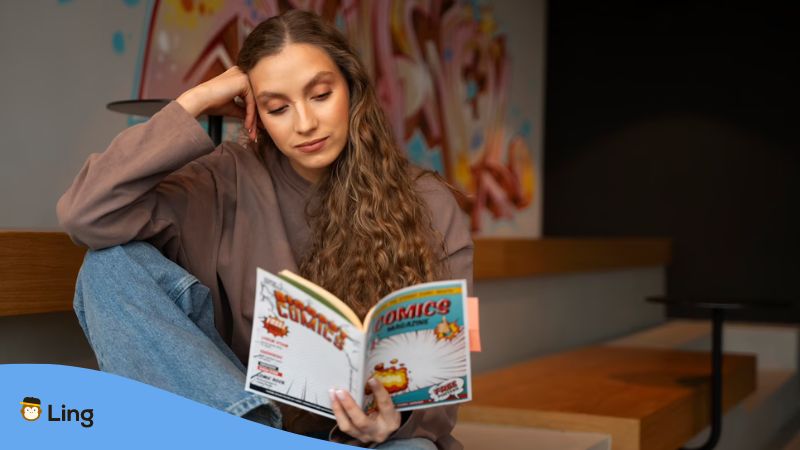
6. Regular Practice And Continued Learning
We’re almost at the finish line, but remember that language learning is a marathon, not a sprint.
To truly master Korean writing, you need to weave it into your daily routine.
Here are some practical tips for regular practice and continued learning.
Writing Practice
Daily writing practice is paramount. It’s the key to getting comfortable with Hangul, Hanja, and even Seoye.
And the best part?
There are a multitude of resources to help you along the way!
Try writing simple sentences, then gradually move on to paragraphs and, eventually, entire essays.
There are also many websites and apps that offer structured practice for the modern Korean alphabet.
For instance, some websites allow you to write in Korean and get feedback from native speakers.
Don’t forget about the old-fashioned way either: keeping a daily journal in Korean.
This not only helps your writing but also improves your Korean vocabulary and grammar usage.
Reading Korean Texts
Reading Korean texts is just as crucial as writing.
It helps reinforce what you’ve learned while exposing you to new vocabulary and sentence structures.
Start with children’s books or graded readers, as they usually use simpler language and short sentences.
As your confidence grows, move on to Korean newspapers, novels, or webtoons.
Websites like Naver Webtoon provide a vast selection of Korean comics that cater to different language levels .
Don’t be afraid to challenge yourself.
The more you read, the more you’ll understand the nuances of Korean writing.
Just remember, every new word or phrase you learn is a victory.
Keep going, and soon, you’ll be reading and writing in Korean like a pro!
Learn More About Korean Writing With Ling!
Let’s face it. You’ve just begun an exciting ride into Korean writing.
But remember, this isn’t the end. It’s the start of your adventure into a new language.
Now, here’s the best part.
The Ling app , a cleverly crafted language app, is ready to join you in your journey.
Think of it as a travel buddy but for language learning.
The Ling app offers engaging, bite-sized lessons that cater to all, from beginners to seasoned language learners.
And Korean is just the beginning.
Ling proudly hosts over 60 different languages. So, who knows?
Today you’re exploring Korean. Tomorrow you could be diving into Tagalog or Thai.
The possibilities are endless with Ling!
The next step?
Grab your phone and download the Ling app from Google Play and App Store .
It’s time to transform your language-learning experience!
Leave a Reply Cancel reply
You must be logged in to post a comment.
Discover more

People also read

No Marathi On Babbel?: 3 Best Resources You Shouldn’t Miss

15-Minute Program Makes Learning Marathi Child’s Play

No Marathi On Duolingo? The #1 Best App To Use This 2023
Southeast asia, east europe.
© 2024 Simya Solutions Ltd.
Home — Essay Samples — Geography & Travel — South Korea — South Korea: an Amazing Country
South Korea: an Amazing Country
- Categories: South Korea
About this sample

Words: 828 |
Published: Aug 30, 2022
Words: 828 | Pages: 2 | 5 min read
Works Cited:
- Haggis, P. (Director). (2004). Crash [Motion Picture]. United States: Lions Gate Films.
- Kellner, D. (2006). Cultural Studies, Multiculturalism, and Media Culture. Film-Philosophy, 10(1), 1-18.
- Leavy, P. (2008). The Oxford Handbook of Qualitative Research. Oxford University Press.
- Liu, J. H., & Hilton, D. J. (2005). Stereotypes and prejudice: Key readings. Psychology Press.
- Martin, M. (2006). Crash: Racism and Hysteria in America. Screen Education, (40), 43-48.
- Nakagawa, S. (2006). A Review of the Movie Crash. The Japanese Journal of American Studies, (17), 299-303.
- Nayar, P. K. (2009). An interview with Paul Haggis. Post Script: Essays in Film and the Humanities, 28(2), 28-36.
- Ponniah, S. (2011). Race and racism in Paul Haggis's Crash: A cultural analysis. International Journal of Humanities and Social Science, 1(6), 260-268.
- Said, E. W. (1978). Orientalism. Vintage Books.
- Shohat, E., & Stam, R. (1994). Unthinking Eurocentrism: Multiculturalism and the Media. Routledge.

Cite this Essay
Let us write you an essay from scratch
- 450+ experts on 30 subjects ready to help
- Custom essay delivered in as few as 3 hours
Get high-quality help

Dr. Heisenberg
Verified writer
- Expert in: Geography & Travel

+ 120 experts online
By clicking “Check Writers’ Offers”, you agree to our terms of service and privacy policy . We’ll occasionally send you promo and account related email
No need to pay just yet!
Related Essays
5 pages / 2330 words
1 pages / 1568 words
3 pages / 1543 words
1 pages / 350 words
Remember! This is just a sample.
You can get your custom paper by one of our expert writers.
121 writers online
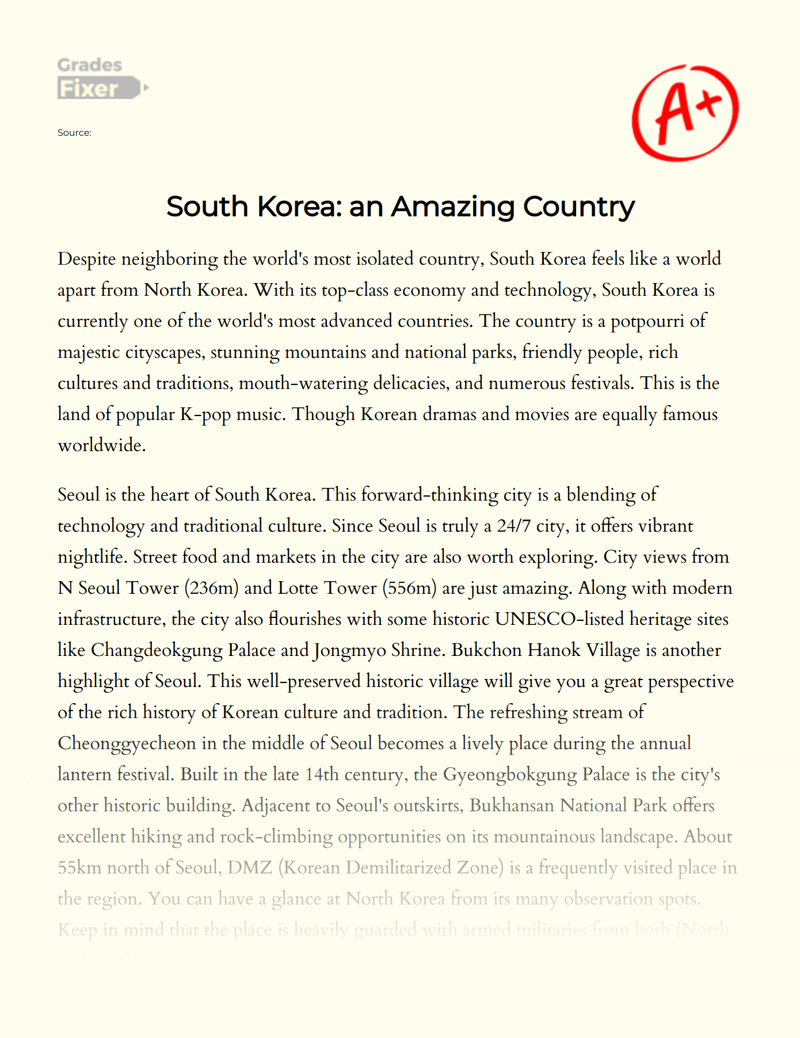
Still can’t find what you need?
Browse our vast selection of original essay samples, each expertly formatted and styled
Related Essays on South Korea
South Korea, known for its vibrant culture and technological advancements, is also home to a diverse range of major landforms that shape its unique landscape. From towering mountains to expansive plains, this East Asian country [...]
Ever since the concept of globalization took over the business world by storm, food industry has been one of the most sought after area for expansion across borders. No matter how tempting the idea of global expansion may sound, [...]
Republic of Korea (South Korea) is one of the most prosperous countries in the world. Its GDP per capita was $39,400 in 2017, as against North Korea where GDP per capita was mere $1700. Much of this difference can be attributed [...]
Aadhar card is a 12 digit identification number issued by the concerned authority on behalf of the government of India. This number, also known as Unique Identity Number(UID), is linked with a number of demographic and [...]
That is a true story that came about in Japan in 1988. A 17-year vintage female named Furuta Junko was kidnapped after which tortured with the aid of four boys with a very inconceivable manner and in the end demise after [...]
The Brothers Karamazov, by Fyodor Dostoyevsky, exaggerates the extremes of Russia, saying that " need continually...two extremes at the same moment, or they are miserable and dissatisfied and their existence is incomplete. [...]
Related Topics
By clicking “Send”, you agree to our Terms of service and Privacy statement . We will occasionally send you account related emails.
Where do you want us to send this sample?
By clicking “Continue”, you agree to our terms of service and privacy policy.
Be careful. This essay is not unique
This essay was donated by a student and is likely to have been used and submitted before
Download this Sample
Free samples may contain mistakes and not unique parts
Sorry, we could not paraphrase this essay. Our professional writers can rewrite it and get you a unique paper.
Please check your inbox.
We can write you a custom essay that will follow your exact instructions and meet the deadlines. Let's fix your grades together!
Get Your Personalized Essay in 3 Hours or Less!
We use cookies to personalyze your web-site experience. By continuing we’ll assume you board with our cookie policy .
- Instructions Followed To The Letter
- Deadlines Met At Every Stage
- Unique And Plagiarism Free

Search This Blog
Thekoreanthoughts.
Your guide to anything Korean, by a Korean-at-heart!
Korean Reading Exercises - Part 2

Korean Reading Exercises - Part 1

<3 this is awesome!!! THANK YOU THANK YOU THANK YOU
An excellent exersize for beginners.

Thanks! I hope I can produce some more soon, just check it out! :)

thank you <3 i love hangul <3
lmfao you koreaboo
Thank u <3
I was excepting a paragraph to read.
Thank you, I've just started Korean and this is so useful for practicing reading blocks *follows blog*
haha i got "meonit'eu" for number one. i'm assuming it's "monitor" but something went wrong lol
Hey there! Thank you for putting up this exercise, it was really helpful! 😍 But I've noticed a mistake on the very first word: you wrote 머니터, but shouldn't it be 모니터? Thank you again, hope you have a great day ❤
감 사 함 니 다 !
Yes. Got a perfect score
Yes. I got a perfect
I gor them all 감사함니다 !!! ☺☺
It was awesome! 감사합니다.
The first exercise is helpful for living and getting around in Korea.
The first exercise is helpful for living and getting around in Korea. It's useful to know where the bus stop is, where to get a hamburger or pizza, and where to grab a cup of joe.
Thanks, this is very helpful..! :)
thanks for these! <3
These are really good! Except one , 부라질 should be 브라질 Keep up the good work~
this is amazing thank youuuu
This is really helpful. Thank you so much
I did it hahaha

I freaking did it!!! Korea I'm coming
Thank You for your exam! I feel so proud that I can read all those words. Thank You for the exercises! It helped me a lot!
Great I reallly like it
use spilled the first one wrong its 모니터
Thanks for the help 🤗
감사합니다!!!!! I got Perfect too :)
Thank you so much! I finally understood the basics of reading & writing! that little sheet really helped understand the letters more! 검사 미더! 너 드 디 어 이해했다 읽기와 쓰기의 기본! 그 작은 시트는 글자를 더 잘 이해하는 데 정말 도움이 되었습니다!
Post a Comment
Give me some of your thoughts about the post! :)
Popular posts from this blog
Korean writing exercises - part 1.


Essay on South Korea
Students are often asked to write an essay on South Korea in their schools and colleges. And if you’re also looking for the same, we have created 100-word, 250-word, and 500-word essays on the topic.
Let’s take a look…
100 Words Essay on South Korea
Introduction.
South Korea, officially known as the Republic of Korea, is a country in East Asia. It’s known for its green, hilly countryside, centuries-old Buddhist temples, and high-tech cities.
South Korea is located on the southern part of the Korean Peninsula. It is surrounded by the Yellow Sea to the west, and the East Sea to the east.
Capital City
The capital city, Seoul, is a bustling metropolis with modern skyscrapers, high-tech subways, and pop culture alongside historic palaces, and street markets.
Korean culture is rich with tradition, including the popular Korean music, K-pop, and Korean dramas that are famous worldwide.
South Korea has a robust economy, being one of the world’s leading industrialized nations. It’s a global leader in technology, electronics, shipbuilding, and auto manufacturing.
250 Words Essay on South Korea
South Korea, officially known as the Republic of Korea, is a country in East Asia, constituting the southern part of the Korean Peninsula. Its rapid economic growth, technological advancements, and rich cultural heritage make it a fascinating subject of study.
Economic Growth and Technological Advancements
South Korea’s economic growth, often referred to as the “Miracle on the Han River,” transformed it from a war-torn nation to an economic powerhouse. It is home to renowned multinational corporations like Samsung, Hyundai, and LG. Moreover, the country’s technological advancements, particularly in the fields of IT and robotics, have positioned it as a global leader in innovation.
Culture and Heritage
South Korea’s rich cultural heritage, embodied in its traditional music, dance, and art forms, coexists with its modern pop culture. The global phenomenon of K-pop and Korean dramas (K-dramas) has significantly increased its cultural influence, a phenomenon known as the “Korean Wave” or “Hallyu.”
Political Landscape
The political landscape of South Korea is marked by its democratic system and ongoing tensions with North Korea. Despite these challenges, South Korea has maintained political stability, contributing to its economic and social progress.
South Korea’s journey from devastation to prosperity, its technological prowess, and cultural richness offer valuable insights into the transformative power of innovation, cultural preservation, and resilience. It stands as a testament to the potential of human endeavor in shaping a nation’s destiny.
500 Words Essay on South Korea
Economic development.
South Korea’s economic narrative is one of the most compelling stories of the 20th century. From the ashes of the Korean War, the nation rose to become the 10th largest economy in the world, a phenomenon often referred to as the “Miracle on the Han River.” South Korea’s economic model, heavily reliant on chaebols (family-controlled conglomerates), has been instrumental in this rapid development. Companies like Samsung, Hyundai, and LG have become global powerhouses, contributing significantly to the country’s GDP.
Technological Advancement
South Korea is a global leader in technological innovation and digital connectivity. With the highest internet speed in the world and a tech-savvy population, the nation is at the forefront of the Fourth Industrial Revolution. South Korea’s commitment to research and development, coupled with a robust education system, has fostered an environment conducive to technological advancement. The country is also home to the city of Songdo, one of the world’s first smart cities designed from the ground up.
Cultural Exportation
South Korea’s cultural influence, known as the “Korean Wave” or Hallyu, has swept across the globe. Whether it’s K-dramas, K-pop, Korean cuisine, or beauty products, South Korean culture has permeated every corner of the world. This cultural exportation has not only boosted the country’s soft power but also contributed significantly to its economy. The global popularity of groups like BTS and movies like “Parasite” are testaments to the country’s cultural influence.
Despite its economic and cultural prowess, South Korea faces a complex and challenging political landscape. The nation is technically still at war with North Korea, as the Korean War ended with an armistice, not a peace treaty. This geopolitical tension, coupled with the pressure of being sandwiched between China and Japan, presents unique challenges for South Korea.
South Korea is a nation that has successfully navigated the path from war-torn poverty to economic prosperity and global cultural influence. Despite the geopolitical tensions that persist, the country continues to forge ahead, driven by innovation, cultural richness, and an indomitable spirit. South Korea’s journey is a testament to the power of resilience, strategic planning, and cultural vibrancy. It serves as an example for other nations aspiring to similar heights of development and global impact.
Apart from these, you can look at all the essays by clicking here .
Happy studying!
Leave a Reply Cancel reply

Korean Grammar for Beginners
Last modified: Jul 05, 2024 | 14 min read | By Laura Toyryla
Learning Korean? If you’re studying the Korean language , then you’ll need to have your Korean grammar down!
Today, we’ll teach you the basics of Korean grammar so you can start forming sentences that mean exactly what you want to say.
Ready to become a grammar master? Let’s learn the basics of Korean grammar!
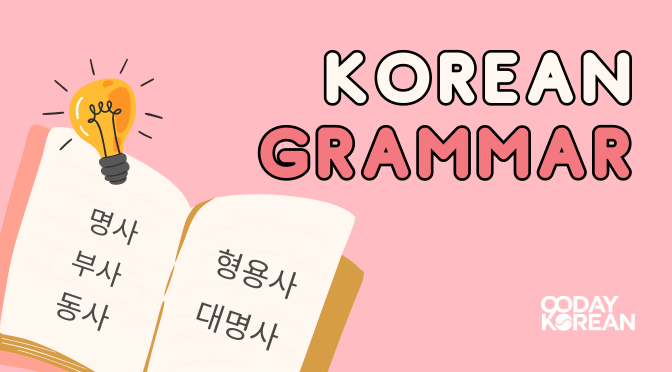
Here is an easy-to-learn Korean PDF on Korean Grammar that you can download and take with you:
- 1 Korean Grammar in Use
- 2.1 How are Korean sentences structured?
- 3 Effective Grammar Learning
- 4 Korean Nouns
- 5 Korean Pronouns
- 6 Korean Particles
- 7 Korean Adjectives
- 8.1 “To be” in Korean
- 8.2 “To have” in Korean
- 8.3 “To not have” in Korean
- 8.4 “To do” in Korean
- 9.1 Other Korean adverbs
- 9.2 Korean Adverbs of Frequency
- 9.3 Korean Adverbs of Place
- 9.4 Korean Adverbs of Time
- 10 Korean Conjugation
- 11 Korean Negative Verb Form
- 12 Korean punctuation
- 13 Korean Grammar PDF
- 14 Other helpful resources

Korean Grammar in Use
Korean grammar, like any other language, has a lot of rules and topics to cover. However, you don’t need to know everything and the more advanced topic as you’re starting. You’ll only need to know the Korean grammar in use .
These are basic grammar topics and rules that you’ll need to know to bring your Korean skills to the next level.
Below, we’ll explain Korean grammar in use with Hangeul (Korean Alphabet) and in Romanized English. You can learn the Korean Alphabet in under an hour here .
Is Korean grammar difficult?
It wouldn’t be accurate to say that Korean grammar is difficult or easy. Like many Asian languages, the grammar is quite different from English. But like the grammar of any foreign language, Korean grammar follows the rules and sentence structure that makes sense.
In fact, Korean grammar is pretty straightforward. This gives you more reason to love and learn Korean ! You just need to get used to the primary quirk of its grammar.
You may know that English basic grammar follows the structure:
SUBJECT (S) + VERB (V) + OBJECT (O)
For example, I (subject) study (verb) Korean (object). Most languages have an SVO grammar structure like this. The action leads the object so you know what is happening before you know what it’s happening to.
How are Korean sentences structured?
Basic Korean grammar, on the other hand, uses the order:
SUBJECT (S) + OBJECT (O) + VERB (V) .
For native speakers of languages that use the SVO grammar structure, such as English, this may sound confusing and incorrect.
Korean, Japanese, and to some extent German, all use SOV in their grammar. You’ll understand why this kind of grammar makes sense when forming a Korean sentence later in the lesson. For now, here are some examples of the sentence structure of Korean to help you get acquainted with the grammar:
Example 1: I ate an orange.
나는 오렌지를 먹었어요.
(naneun orenjireul meogeosseoyo)
I + orange + ate
Example 2: My big brother plays football.
오빠가 축구를 해요.
(oppaga chukgureul haeyo)
Big brother + football + to do
Example 3: I meet my friend.
나는 친구를 만나요.
(naneun chingureul mannayo)
I + friend + to meet
To understand why the Korean language uses grammar like this , you need to understand a bit about Korean verbs and how they work.
We’ll give you a quick introduction and explanation of how Korean verbs work in Korean grammar below. But before we get into Korean verbs, let’s learn about the other parts of speech:
- Korean nouns
- Korean pronouns
Korean Particles
Korean adjectives, effective grammar learning.
Korean grammar can be daunting and complex for beginners because it uses a sentence structure different from most languages. But don’t get intimidated by that.
There are fun and motivating ways you can learn it. You can look for these in the courses you’re going to take to learn Korean.
- Step-by-step approach – You can start with the basics and bring it up to the next level one step at a time. You don’t have to be good at the most complex sentence structure immediately.
- 80/20 principle – Start by learning 20% of sentence structure, Korean words, and verb endings that you will use 80% of the time. This means that you don’t have to learn everything all at once.
- Simple explanations – Grammar can become overwhelming if the explanations are too complex. You’ll find the lesson easy to understand if the explanations are simple.
In our Inner Circle program , we use these 3 frameworks to teach Korean grammar to our students. This has helped over 18,000 students in improving their Korean language skills.

Korean Nouns
In any language, the first basic part of speech we all learn is the noun. We start building our vocabulary and knowledge of the language with nouns. Once we know them, we can easily build phrases or simple sentences.
Korean nouns are called 명사 (myeongsa). They are made plural by adding 들 after the noun. However, some nouns, like in the English language, don’t need 들 for them to be made plural as they’re already understood as plural nouns.
For example:
학생 → 학생들 남자 → 남자들 사람 → 사람들 책 → 책들 꽃 → 꽃들
Korean nouns are used as subjects and objects in sentences. The particles 이 and 가 are used when Korean nouns are used as a subject. On the other hand, the topic markers 을 and 를 are used when a Korean noun is used as an object in a sentence.
Example 1: Hyerim is eating an apple.
혜림이 사과를 먹고 있어요.
(hyerimi sagwareul meokgo isseoyo.)
Example 2: The students read a Science book.
학생들이 과학 책을 읽어요.
(haksaengdeuri gwahak chaegeul ilgeoyo.)
To know more about Korean nouns, we have lessons on Body Parts in Korean , Animals in Korean , Fruits, Nuts, and Vegetables in Korean , Fish in Korean , and Jobs in Korean to help you get started.
Korean Pronouns
Korean pronouns are a very important part of Korean grammar, especially in daily conversations. It’s also important to know that, unlike English pronouns, Korean pronouns can vary in terms of formality.
If you are speaking to someone of a higher position or social status, you should use Korean pronouns that are formal. It would be offensive to Koreans if you use Korean pronouns that are not appropriate to the relationship or the social status between you and the person you’re talking to or talking about.
Here is a resource that will help you learn about the basic Korean pronouns.
Korean particles are also another important part of Korean grammar. Without Korean particles, Korean sentences wouldn’t be complete. In general, Korean particles can have many functions but can be summarized as subject/object markers and indicators.
If you plan to be fluent in Korean, you’ll need to learn and understand how to properly use Korean particles. Here’s a resource for you to learn the most commonly used Korean particles.
Korean adjectives make story-telling and daily conversations easier and more fun. They help us describe and give a clear picture of nouns.
Korean adjectives are called 형용사 (hyeongyongsa) in Korean. They usually take the 하다 (hada) form.
- 시원하다 (siwonhada) → to be cool
- 따뜻하다 (ttatteutada) → to be warm
- 깨끗하다 (kkaekkeutada) → to be clean
- 유명하다 (yumyeonghada) → to be famous
- 똑똑하다 (ttokttokada) → to be smart
- 착하다 (chakada) → to be nice
- 건강하다 (geonganghada) → to be healthy
But it’s important to note that not all words ending with 하다 (hada) are adjectives.
- 많다 (manta) → to be much
- 적다 (jeokda) → to be a little
- 작다 (jakda) → to be small
- 크다 (keuda) → to be big
- 멀다 (meolda) → to be far
- 싸다 (ssada) → to be cheap
- 비싸다 (bissada) → to be expensive
- 가깝다 (gakkapda) → to be near
- 나쁘다 (nappeuda) → to be bad
When describing nouns with Korean adjectives, they usually take the Korean adjective + Korean noun form. This is similar to how we describe nouns in English.
- 비싼 시계 (bissan sigye) → an expensive watch
- 착한 남자 (chakan namja) → a nice guy
- 따뜻한 사람 (ttatteutan saram) → a warmhearted person
Korean adjectives are also like verbs. They are descriptive verbs and go at the end of a Korean sentence. And because they go at the end of a sentence, they also use the same verb endings when conjugated.
오늘은 날씨가 더워요. (oneureun nalssiga deowoyo.)
Today’s weather is hot.
이 시계는 비싸요. (i sigyeneun bissayo.)
This watch is expensive.
To learn more about Korean adjectives here’s a resource for you called Korean Adjectives – Descriptive verbs and how to conjugate them .
Basic Korean Verbs
Verbs are one of the most important parts of speech in Korean grammar. They’re called 동사 (dongsa) in Korean. The beauty of Korean verbs comes from the fact that by simply learning them and their correct conjugated forms, you’re able to form a sentence.
In Korean grammar, the verb needs to be conjugated based on the context. This means that Korean verbs follow certain grammar rules that control how they’re spelled.
You’ll conjugate the word depending on its tense, level of politeness, and whether the connecting vocabulary ends in a vowel or consonant.
For example, the verb 자다 (jada). This means “to sleep”. This word will be spelled differently depending on certain grammar rules, such as tenses.
- Polite Present tense: 자요 (jayo)
- Polite Past tense: 잤어요 (jasseoyo)
- Polite Future tense: 잘 거예요 (jal geoyeyo)
- Polite Present progressive: 자고 있어요 (jago isseoyo)
However, the form does not change depending on the subject! So you don’t have to worry about the Korean particle changing (a topic for another article).
Let’s dive a bit further into this grammar point with some examples of conjugation. Note that we’ll mention Korean honorific verbs. Go here if you’re not familiar with them yet.
“To be” in Korean
The verb “to be” in Korean is 이다 (ida). This is usually when you want to specify something or when the subject and predicate are the same.
저는 중국사람이에요. (jeoneun jungguksaramieyo.)
I’m Chinese.
석민 씨는 가수예요. (seongmin ssineun gasuyeyo.)
Seokmin is a singer.
The Korean verb 이다 (ida) can be conjugated as 예요 (yeyo) or 이에요 (ieyo) or 입니다 (imnida).
“To have” in Korean
The verb “to have” in Korean is 있다 (itda). This is also used when expressing that something exists. When used in sentences, 있다 (itda) is conjugated as 있어요 (isseoyo) or 있습니다 (itseumnida).
신용 카드 있어요. (sinyong kadeu isseoyo.)
I have a credit card.
핸드폰 있어요? (haendeupon isseoyo?)
Do you have a cell phone?
책상 위에 책이 있어요. (chaeksang wie chaegi isseoyo.)
There is a book on the desk.
“To not have” in Korean
The verb “to not have” in Korean is 없다 (eopda). This is the opposite of the Korean verb 있다 (itda).
Similar to the 있다 (itda), 없다 (eopda) is conjugated as 없어요 (eopseoyo) or 없습니다 (eopseumnida) depending on the level of politeness you want to convey.
저는 언니가 없어요. (jeoneun eonniga eopseoyo.)
I don’t have a sister.
수연 씨는 고양이 없어요. (suyeon ssineun goyangi eopseoyo.)
Suyeon doesn’t have a cat .
냉장고에 우유가 없어요. (naengjanggoe uyuga eopseoyo.)
There is no milk in the refrigerator.
“To do” in Korean
The verb “to do” in Korean is 하다 (hada). You’ll often see this verb attached to many Korean verbs.
노래하다 (noraehada) → To sing
요리하다 (yorihada) → To cook
공부하다 (gongbuhada) → To study
말하다 (malhada) → To speak

Korean Adverbs
Korean adverbs help describe verbs and adjectives similar to how they work in English grammar. They are called 부사 (busa) in Korean.
Many Korean adverbs are from other forms, such as verbs and adjectives.
There are 3 common forms of Korean Adverbs.
The first form is -이 (-i).
- 완전하다 (wanjeonhada) – Complete → 완전히 (wanjeonhi) – completely
- 편하다 (pyeonhada) comfortable → 편히 (pyeonhi) – comfortably
- 솔직하다 (soljikada) – honest → 솔직히 (soljiki) – honestly
The second form is -게 (-ge)
- 빠르다 (ppareuda) – quick → 빠르게 (ppareuge) – quickly
- 맛있다 (masitda) – delcious → 맛있게 (masitge) – deliciously
- 멋지다 (meotjida) – awesome → 멋지게 (meotjige) awesomely
The third form is -으로 (-euro) or 적으로 (jeogeuro)
- 사적 (sajeok) – personal → 사적으로 (sajeogeuro) personally
- 공식 (gongsik) – official → 공식적으로 (gongsikjeogeuro) – officially
- 일반 (ilban) – common → 일반적으로 (ilbanjeogeuro) – commonly
Other Korean adverbs
There are also adverbs that aren’t from verbs/adjectives. A few of them are 잘 (jal), 매우 (maeu), and 바로 (baro).
나는 글씨를 잘 써요. (naneun geulssireul jal sseoyo.)
I write well.
그녀는 매우 아름다워요. (geunyeoneun maeu areumdawoyo.)
She is very beautiful .
나는 학교에서 바로 집에 왔어요. (naneun hakgyoeseo baro jibe wasseoyo.)
I came home straight from school.
Korean Adverbs of Frequency
They are used to describe how often an adjective, action, or verb happens.
Two examples of Korean adverbs of frequency are 항상 (hangsang) and 자주 (jaju). Below are sample sentences of both adverbs.
저는 항상 안전운전을 해요. (jeoneun hangsang anjeonunjeoneul haeyo.)
I always drive safely.
저는 자주 책을 읽어요. (jeoneun jaju chaegeul ilgeoyo.)
I often read books.
Korean Adverbs of Place
These are adverbs that help describe or modify adjectives and verbs. They help you know where the word it modifies happens.
Two examples of Korean adverbs of place are 야외 (yaoe) and 밖에 (bakke). Below are sample sentences of both adverbs.
야외에서 우리는 많은 이야기를 했어요. (yaoeeseo urineun maneun iyagireul haesseoyo.)
We talked a lot outdoors.
학생들은 밖에서 놀았어요. (haksaengdeureun bakkeseo norasseoyo.)
The students played outside.
Korean Adverbs of Time
Two examples of Korean Adverbs of Time are 지금 (jigeum) and 매년 (maenyeon). Below are sample sentences of both adverbs.
저는 지금 피곤해요. (jeoneun jigeum pigonhaeyo.)
I’m tired now .
매년 겨울은 무척 추워요. (maenyeon gyeoureun mucheok chuwoyo.)
Every winter , the weather is especially cold.
Korean Conjugation
One of the basic Korean grammar rules you need to learn is conjugation. In Korean grammar, there are 2 things you can conjugate. These are verbs and adjectives.
Korean conjugations determine the meaning, tense, tone, and mood of sentences. It’s important to learn Korean verb conjugation as you progress in learning Korean. Below is a list of the common conjugations of verbs according to their tenses.
- Verb + ㅂ니다/습니다 (ㅂ nida/seumnida) = honorific verb, present
- Verb + 아요/어요 (ayo/eoyo) = polite/formal verb, present
- Verb + 야/이야 (ya/iya) = casual/informal verb, present
- Verb + 았어요/었어요 (asseoyo/eosseoyo) = polite/formal verb, past
- Verb + 았어/었어 (asseo/eosseo) = casual/informal verb, past
- Verb + 겠어요 (gesseoyo) = polite/formal verb, future
- Verb + ㄹ/을 거예요 (ㄹ/eul geoyeyo) = polite/formal verb, future
- Verb + 겠어 (gesseo) = casual/informal verb, future
- Verb + ㄹ/을 거야 (ㄹ /eul geoya) = casual/informal verb, future
One plus about Korean verbs is that they generally stick to their conjugation rules, which makes it easier to know the correct grammar structure to follow in a given situation. This helps with deciding what to include in your grammar and vocabulary studies .
Check out this article for a detailed explanation of Korean Conjugations .
Korean Negative Verb Form
Turning sentences into negatives was already mentioned when we introduced you to 없다 (eopda) . Let’s briefly go over some other negative verb forms in Korean grammar.
By adding 안 (an) in front of the verb, excluding 있다 (itda) , you are creating a negative. For example:
- 오늘 수업 안 해요 (oneul sueop an haeyo) = I don’t have class today
- 나는 미국에 안 가요 (naneun miguge an gayo) = I am not going to the US
By adding ~지 않다 (~ji anta) to the verb stem, you are also creating a negative. Like this:
- 오늘 수업하 지 않아요 (oneul sueopaji anayo) = I don’t have class today
- 나는 미국에 가 지 않아요 (naneun miguge gaji anayo) = I am not going to the US
* Note: This is not typically the most natural way to express it, although it is grammatically correct.
These two grammar forms are identical in their meaning. With practice, you’ll learn which situations 안 (an) and ~지 않다 (~ ji anta) sound most natural for.
One note before you finish is their use of the verb 하다 . With 안 , you will add the negative right in front of 하다 , breaking it into an object + verb, like this:
- 요리하다 (yorihada) → 요리를 안 했어요 (yorireul an haesseoyo) = to cook → did not cook
With ~지 않다 (~ ji anta), you will keep it intact and instead add the negative at the end, like this:
- 요리하다 (yorihada) → 요리하 지 않았어요 (yorihaji anasseoyo) = to cook → did not cook
Again, both grammar forms are correct, so practice to get a feel for what sounds most natural for you!
Korean punctuation
Korean punctuation is similar to the punctuation marks used in the English language. They are called 문장무호 (munjangmuho) in Korean.
There are 12 Korean punctuation marks. These are the following punctuation marks used in the Korean language:
- Question mark
- Exclamation Mark
- Single quotation mark
- Double quotation mark
- Parentheses
Learning them is important when writing essays, formal letters, emails, or academic papers.
You can find more about these punctuation marks in our lesson on Korean Punctuation .

Korean Grammar PDF
In this section, you’ll get a Korean grammar PDF with important grammar lesson points that you can download, print, and use.
Here’s how you can use the PDF:
- Read one lesson at a time. Each lesson discusses a grammar point or a pattern that can help you build Korean sentences.
- After reading one lesson, try to use the grammar point in creating your own sentence.
- Use the Korean words you already know to fill in the grammar points in each lesson. It will help you build more sentences if you have a good amount of Korean vocabulary.
Other helpful resources
Congratulations! You have now learned the basics of Korean grammar. It’s not that hard to learn Korean , after all. This is an essential first step in learning Korean and we’ve got lots more great Korean lessons to help you learn Korean. You might be interested in these topics as well:
- Get a plan for learning Korean here
- If you want to learn everything about South Korea, go here
- Head over here if you are interested in K-Pop , K-Dramas, or Korean movies
- Check out this page for lots of useful Korean phrases
- Get some of the most common Korean words here
- Go here to learn about Korean culture
- You can find Korean textbook recommendations here
Stick with us, and we’ll make Korean language learning fun and easy to learn!
Photo Credit: Bigstock
Related Posts
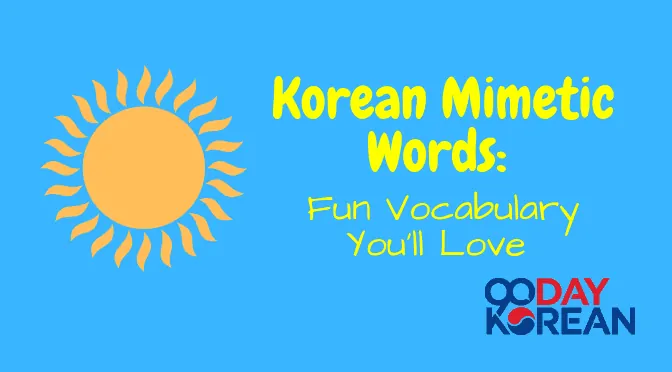
Korean Mimetic Words: Fun Vocabulary You’ll Love (의태어)
Last modified: Jun 25, 2024 | 5 min read | By 90 Day Korean
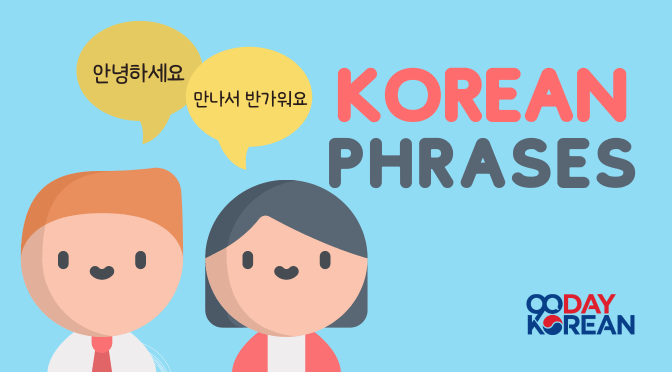
Korean Phrases – Basic Expressions and Sentences for Travel & Everyday Life with Audio
Last modified: Jul 31, 2024 | 34 min read | By 90 Day Korean
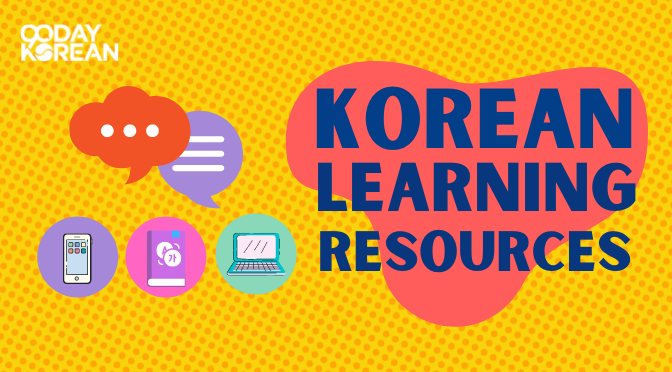
Korean Learning Resources – Best websites and language tools
Last modified: Jul 12, 2024 | 18 min read | By 90 Day Korean
124 thoughts on “Korean Grammar for Beginners”
Hello! Im a little confused where to start with learning Korean, ive memorized the alphabet and im starting on numbers for the native number system and sino number system where do i go from here?
Hi Avalia! Thanks for your comment! It’s a common challenge for Korean learners to feel confused on where to start with learning Korean. I suggest giving yourself some kind of structure so that you know you’re making progress. ^^ Since you’ve already memorized the Korean Alphabet , you can follow the lessons on How-To Guide for Language Study to help you further.
i am still confused please give me tips so can understand verb and adj please i need help
Thanks for your comment! ^^ You can check our articles below to help you in learning Korean verbs and adjectives:
Korean Verbs – The Complete List of Passive, Action, Irregular, and Adjective Words Korean Adjectives – Descriptive verbs and how to conjugate them
If you want, you can also check our blog and visit our YouTube channel for articles and videos with great Korean content.
I am confuse that sometimes we use jeoneun and sometimes other word??
Hello Aarohi, you may use 나는 (naneun) instead of 저는 (jeoneun), when speaking casually. 저 is a humble form of 나, which can be used in polite/formal speech. ^^
Leave a Comment Cancel Reply
Your email address will not be published. Required fields are marked *
Choose your skill level and start getting fast results with your Korean:


Key to Korean Motivation & Resources for Learning Korean
TOPIK Beginner Writing Samples (Tests 21-30)
One of the BEST things I ever studied while preparing for the TOPIK test was the sample answers that the TOPIK website provides.
TOPIK-Beginner Writing Topics & Samples (21-30).DOCX
So, I’ve decided to collect ALL the previous TOPIK Writing topics and examples provided by www.topik.go.kr into a single document. However, since there are so many, I’ve decided to split the larger document into 2 smaller parts with 10 previous tests each (TOPIK Writing began from test 10).
Take a look:

Why were these writing samples so great?
Simply, I could see some of the grammar structures and vocabulary that would give me more points on the test if I used them. Take test 29 for example. In the fourth sentence, it says:
시내에는 볼 것도 많고 맛있는 것도 많이 있기 때문입니다.
When preparing, ~기 때문입니다 (because of doing something) was one of the most useful things I learned. I made it my mission from then on to use either ~기 때문입니다 or ~때문에 (because of) in my TOPIK writing at some point.
Take a look also at the second sentence:
저는 운동을 좋아해서 친구들을 만나면 집 근처에 있는 운동장에서 농구 나 축구를 합니다.
The sentence basically says: “Since I like to exercise, if I meet my friends, we like to play basketball or soccer at the playground near my house.”
This is a great sentence to use “since” (~서) and “if” (~면) and “or” (나) and “nearby” (근처에 있는) – or any combination of the four.
Those are just a few examples of the kinds of great grammar structures you can find, learn from, and practice as you prepare for TOPIK. And if you want more help TOPIK Writing resources for Beginners, check out the following:
- TOPIK Beginner Writing Topics & Tips (한국어능력시험 초급 쓰기)
How have the TOPIK sample answers helped you on TOPIK?

Share this:
A note about topik registration in korea.
Warning: TOPIK II test locations fill up quickly! Less than 2 hours after registration opened, I was 17,878 in line. After 5 hours, everything that opened for registration today was full. Be early, or be sorry. (Or wait for IBT TOPIK from 2023.)
120 Days to TOPIK #1 – Gather Resources
Gather your resources! This is one of my favorite parts of any new Challenge because it can be fun to look over the kinds of materials you WANT to use and the kinds of things you WANT to learn (plus, Continue reading 120 Days to TOPIK #1 – Gather Resources
How I Will Study for the TOPIK II in 120 Days (and You Can Join Me)
Well, that was unexpected. I recently wrote a post outlining my plan to cram for the TOPIK II in 30 days. I had been planning to take the test on July 19, 2015. But, I guess plans change. As it turns Continue reading How I Will Study for the TOPIK II in 120 Days (and You Can Join Me)
Leave a Reply Cancel reply
This site uses Akismet to reduce spam. Learn how your comment data is processed .
- Entertainment
- Environment
- Information Science and Technology
- Social Issues
Home Essay Samples Sociology
Essay Samples on Korean
Exploring why k-pop and korean wave is so popular.
Intro Hello everyone. Today I will be discussing how the integration of social media into Kpop fandoms, particularly through video streaming platforms like Youtube, has affected fan participatory culture, by altering the interaction and behaviours of fandoms and the distribution of Korean content throughout the...
- Music Industry
Taekwondo: Korean Art of Defending Yourself and Your Loved Ones
Taekwondo is a Korean martial art, characterized by its emphasis on head-height kicks, jumping and spinning kicks, and fast kicking techniques. The name Taekwondo means the way of the foot and fist. Various martial artists combined the elements of Karate and Chinese martial arts with...
The Impending Danger of the Korean War and Desire for Peace
Wars have rarely been the solution to prejudices in the history of mankind. Yet wars have always been fought ruthlessly to quench the human desire of domination and power. The obsession to enforce one’s own ideology, and the need to prevail and survive have led...
The Influence of Political Parties on the Development of Korean Culture and Society
In this essay, I will address some of the underlying assumptions of the question posed in order to reframe it into a more nuanced inquiry that relates Korea’s cultural and societal development to the influence of nearby powerful political entities. I will first challenge the...
Portrayal and Depiction of Women in the Korean Literature Influenced by the Korean War
My topic is focus on females in Korean literatures. Korean female's literature is deeply influenced by patriarchy. From the rise of Korean modern novels in the 1920s to the 1990s, Korean female's literature mostly represented females' subordination of the patriarchalism. This subordination is reflected in...
Stressed out with your paper?
Consider using writing assistance:
- 100% unique papers
- 3 hrs deadline option
Effects of Patronizing Korean Pop (KPOP) Songs in the Philippine Music Industry
Abstract Philippine music, with its famous OPM and other genres of music brought by the influence of the westerners, have been affected when foreign music like Korean pop songs became famous to the Filipinos. It has been affected in a sense that only a few...
The Importance to Appreciate Korean Culture in the Medical Field
In the medical field, there are many different cultures, religions that you are going to run into that face different beliefs, backgrounds that you may not understand. One example is the Korean culture. Even though a majority of Korean people understand and speak English you...
- Alternative Medicine
- Cultural Anthropology
The International Profit and Dependancy of the Korean War
The major downfall of the European and American forces is that they underestimated the Asian forces, and the willingness of China to fight in protection of its interests. They saw the Koreans as an inferior people, and this prejudice led them to believe that they...
- International Politics
The Pattern of Korean Migration to Philippines
Looking at it from a national-level perspective, Kutsumi (2004), studies the formation of social organization and offers some estimates of the magnitude of Korean migration to the whole of the Philippines. Using data obtained from the Annual Report of Statistics on Immigration and Emigration Control...
- Philippines
Comparing And Contrasting Cultures: Korean Culture And Caribbean Hispanics
I find the Korean culture very interesting because my favorite food to eat is Korean bbq and I would love to learn more about their culture. According to statistics, the international diabetes federation lists the prevalence of diabetes in Korea in 2003 as 5% to...
Destination Image Of Ho Chi Minh City By Korean Tourists
During the past few decades, destination image (DI) has been extensively defined in literature from a psychological perspective. In the tourism literature, destination image has been defined by a range of specific keywords, as mental impressions, knowledge, beliefs, expectations, ideas, perceptions, and emotional thoughts of...
My Tour Of The Korean DMZ
The Korean DMZ is a 2.5-mile wide border that spans the 160-mile long peninsula between North and South Korea. Leading up to WWII, the Japanese controlled the Korean peninsula. Later, the area was predominantly communist with hopes of expanding throughout the entire area. However, that...
The Crucial Aspects Of South Korean Business
Introduction As the international affairs officer for Fontana Technologies, I was tasked with the responsibility of determining what country would be best suited for our 2019 expansion. After analyzing a number of socioeconomic components, South Korea is the location that compliments the needs as well...
- Microeconomics
Best topics on Korean
1. Exploring Why K-pop And Korean Wave Is So Popular
2. Taekwondo: Korean Art of Defending Yourself and Your Loved Ones
3. The Impending Danger of the Korean War and Desire for Peace
4. The Influence of Political Parties on the Development of Korean Culture and Society
5. Portrayal and Depiction of Women in the Korean Literature Influenced by the Korean War
6. Effects of Patronizing Korean Pop (KPOP) Songs in the Philippine Music Industry
7. The Importance to Appreciate Korean Culture in the Medical Field
8. The International Profit and Dependancy of the Korean War
9. The Pattern of Korean Migration to Philippines
10. Comparing And Contrasting Cultures: Korean Culture And Caribbean Hispanics
11. Destination Image Of Ho Chi Minh City By Korean Tourists
12. My Tour Of The Korean DMZ
13. The Crucial Aspects Of South Korean Business
- Gender Stereotypes
- Social Media
- National Honor Society
- Gender Roles
- Discourse Community
- Distracted Driving
Need writing help?
You can always rely on us no matter what type of paper you need
*No hidden charges
100% Unique Essays
Absolutely Confidential
Money Back Guarantee
By clicking “Send Essay”, you agree to our Terms of service and Privacy statement. We will occasionally send you account related emails
You can also get a UNIQUE essay on this or any other topic
Thank you! We’ll contact you as soon as possible.
- Foreign Affairs
- Multicultural Community
- Environment & Animals
- Law & Crime
- Health & Science
- Cryptocurrency
- Thoughts of the Times
- Today in History
- Tribune Service
- Blondie & Garfield
- Letter to the Editor
- Travel & Food
- People & Events
- Around Town
- Fortune Telling
- Shows & Dramas
- Theater & Others
- Korean Storytellers
- 2024 Paris Olympics

| search all menu --> --> |
| search all menu |


The covers of "Once We Stop Scrolling," left, and "Practice Becoming Myself," as part of Minumsa Publishing Group's sixth edition of its annual waterproof book series / Courtesy of Minumsa Publishing Group
Minumsa Publishing Group has launched the sixth edition of its annual waterproof book series, this time spotlighting essays from its humanities magazine, titled "Han Pyeon," which means "one volume" in Korean, the company said Tuesday.
First introduced in 2018, the waterproof book features non-spreading ink printed on mineral paper, which is made from recycled stone waste gathered from quarries and mines rather than wood. These pages are resistant to water damage and can return back to their original form after coming into contact with moisture, making the book suitable for reading at the beach, by the pool or in the bathtub.
Over the years, Minumsa has released water-resistant editions of notable literary works such as Cho Nam-joo's "Kim Jiyoung, Born 1982," Chang Kang-myoung's "Because I Hate Korea" and Chung Se-rang's "School Nurse Ahn Eunyoung."
In 2020, it became the first domestic publishing house to win the iF Design Award in the Communication category for its three-part Gothic-horror series that included Mary Shelley's "The Invisible Girl."
This year's waterproof book series consists of two volumes: "Once We Stop Scrolling" and "Practice Becoming Myself" (direct translations). Each features six essays originally published in the triannual magazine "Han Pyeon," which targets a young generation of readers with its timely sociopolitical topics.
Among the two works, "Once We Stop Scrolling" explores the multifaceted world of image-saturated, dopamine-inducing online media through six short writings penned by authors, scholars and activists.
These essays delve into a number of issues faced by today's young digital natives — the sense of self hidden beneath the glitter of fragmented online images and videos, the dangers of short-term body sculpting for a single body profile photoshoot and the relentless impulse to seek attention through sensational and baiting content.
However, at the same time, social media platforms like TikTok and Instagram can also become powerful sites of protest and solidarity across borders, recently exemplified by the 2022 Woman, Life, Freedom movement in Iran.


| 1 |
| 2 |
| 3 |
| 4 |
| 5 |
| 6 |
| 7 |
| 8 |
| 9 |
| 10 |

Bayern Munich beat Tottenham Hotspur in Seoul
Tottenham 4-3 K-League All-Stars
World Water Day 2024
Busan World Team Table Tennis Championships Finals
Super Bowl 2024

Published August 01, 2024
Announcing the 2024-2025 Common Application for NYU
Billy Sichel
Assistant Vice President of Undergraduate Admissions
It’s August 1st and that means the application at NYU has officially opened. This year, we’ve made some pretty big changes to NYU’s Common Application to simplify the process for our applicants, and to help us learn a little more about you!
When you start NYU’s member questions on the Common App, you’ll see 6 sections that you’ll need to complete. We give you a little bit of a head start by checking off the “Writing” section. This section is optional – but also new and exciting! More on that later.
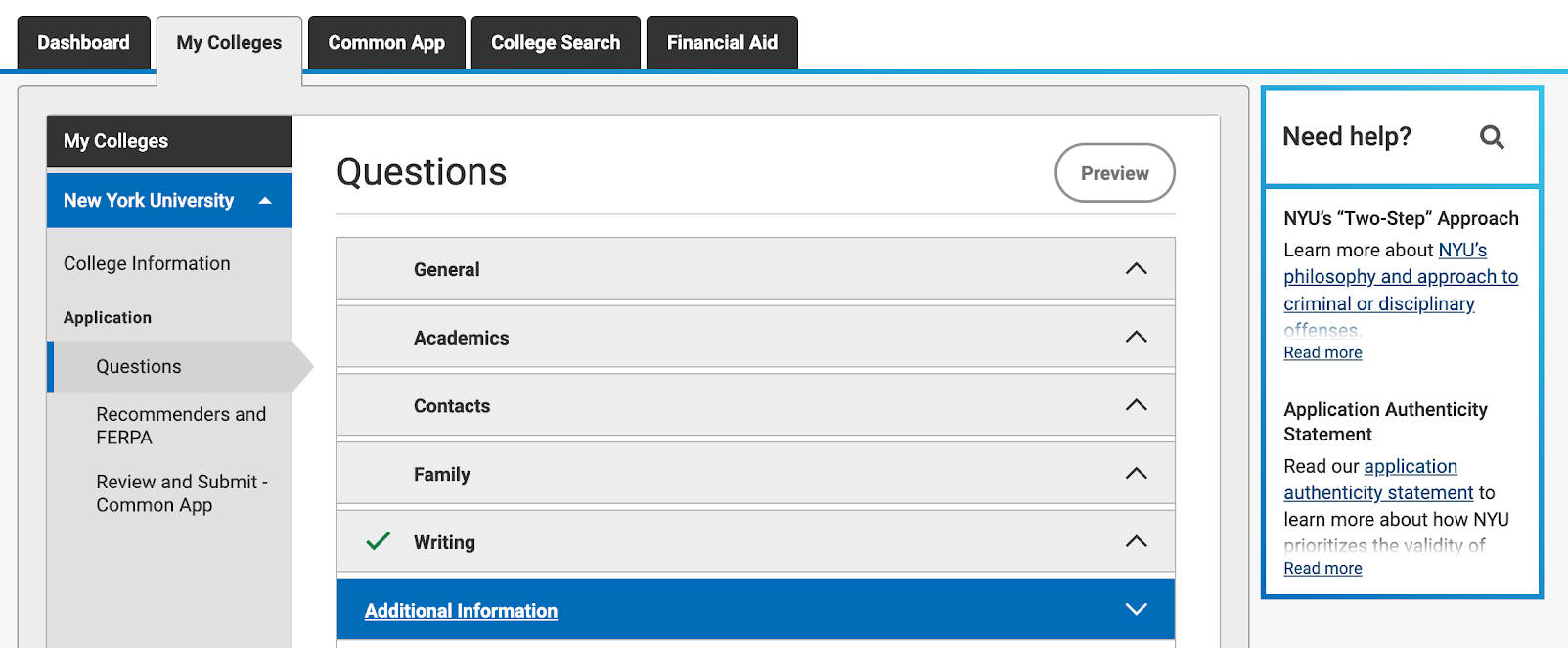
The General Information Section
In the “General” section, you’ll be asked a few questions about how you want us to handle your application – Early Decision I, Early Decision II, or Regular Decision? – and which campus you want to apply to. As you (hopefully!) already know, NYU has three degree-granting campuses: in New York, Abu Dhabi, and Shanghai. Our Common App will let you apply to any combination of our campuses.
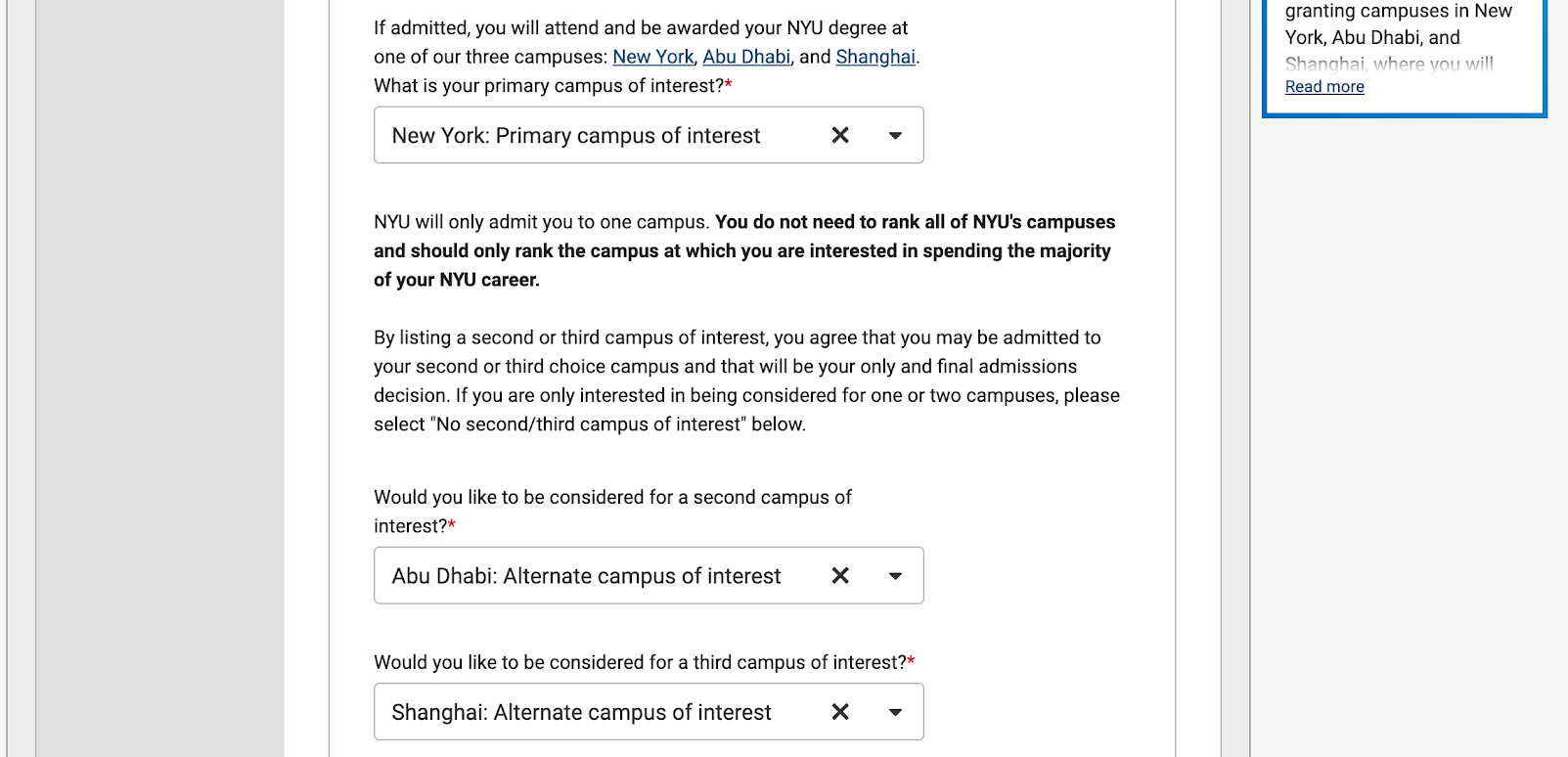
Once you make your campus selections, an additional set of questions will show up that are specific to your campus(es) of interest. Nothing too tricky here! You’ll be able to tell us about your academic area of interest for each campus, and a few other quick-and-easy questions about program eligibility, housing preferences, etc. so that we’re ready for you if you are ultimately admitted.

The Academics Section
Once you have those sections squared away, you’ll move on to the Academics section. This section will walk you through the information we’ll need you to submit outside of the Common App itself. Nothing to do here, except confirm that you’re clear on the next steps and additional requirements.

The Optional Supplemental Question
Now, the moment you’ve been waiting for: The optional, pre-checked-off Writing section. Last year, we made the decision to update our supplemental question. However, what we heard from our applicants was that people really wanted to tell us more! But the thing is…we already know why NYU is a great place to spend your 4 years, so we thought: if you want to tell us more about your passion for NYU, let’s make the question about you .
The new writing question says:
“In a world where disconnection seems to often prevail, we are looking for students who embody the qualities of bridge builders—students who can connect people, groups, and ideas to span divides, foster understanding, and promote collaboration within a dynamic, interconnected, and vibrant global academic community. We are eager to understand how your experiences have prepared you to build the bridges of the future. Please consider one or more of the following questions in your essay :
What personal experiences or challenges have shaped you as a bridge builder?
How have you been a bridge builder in your school, community, or personal life?
What specific actions have you taken to build bridges between diverse groups, ideas, or cultures?
How do you envision being a bridge builder during your time at our university and beyond?”
So, if it feels right for you to tell us a little more about yourself in the application, we want to know where you will turn to for inspiration, and what experiences have shaped you and resonate with you. Four years at NYU will propel you into a future you might not even be able to imagine yet, but take a minute (if you want – it really is optional!) to tell us about the ideas that have gotten you to this point, and those that might shape you into the person you’re about to become.
These are just a few of the changes we have made this year, so make sure to carefully read each question carefully before you answer them. If you ever have any questions for us about our questions, we are always here to help . We wish you the best of luck this application season, and can’t wait to learn more about you!

More from Billy:
How to Approach the Common Application
There’s no wrong way to approach the Common Application, but here’s two different strategies you might want to choose from when you apply to NYU.
Submitting a Transfer Application to NYU
Everything you need and everything you need to know about the transfer process.
Why You Should Start Your Common Application Early
There are many benefits to getting an early start on your Common Application to NYU.
The Personal Statement and Supplemental Essays with Foxcroft School
Monday, August 12, 2024 at 12:00 PM until 1:00 PM Eastern Daylight Time UTC -04:00
By providing your number, you consent to receive notifications from the Wake Forest University Office of Admissions. Reply STOP to unsubscribe. Msg & Data rates may apply.
- UC Berkeley
- Sign Up to Volunteer
- I School Slack
- Alumni News
- Alumni Events
- Alumni Accounts
- Career Support
- Academic Mission
- Diversity & Inclusion Resources
- DEIBJ Leadership
- Featured Faculty
- Featured Alumni
- Work at the I School
- Subscribe to Email Announcements
- Logos & Style Guide
- Directions & Parking
The School of Information is UC Berkeley’s newest professional school. Located in the center of campus, the I School is a graduate research and education community committed to expanding access to information and to improving its usability, reliability, and credibility while preserving security and privacy.
- Career Outcomes
- Degree Requirements
- Paths Through the MIMS Degree
- Final Project
- Funding Your Education
- Admissions Events
- Request Information
- Capstone Project
- Jack Larson Data for Good Fellowship
- Tuition & Fees
- Women in MIDS
- MIDS Curriculum News
- MICS Student News
- Dissertations
- Applied Data Science Certificate
- ICTD Certificate
- Citizen Clinic
The School of Information offers four degrees:
The Master of Information Management and Systems (MIMS) program educates information professionals to provide leadership for an information-driven world.
The Master of Information and Data Science (MIDS) is an online degree preparing data science professionals to solve real-world problems. The 5th Year MIDS program is a streamlined path to a MIDS degree for Cal undergraduates.
The Master of Information and Cybersecurity (MICS) is an online degree preparing cybersecurity leaders for complex cybersecurity challenges.
Our Ph.D. in Information Science is a research program for next-generation scholars of the information age.
- Fall 2024 Course Schedule
- Summer 2024 Course Schedule
The School of Information's courses bridge the disciplines of information and computer science, design, social sciences, management, law, and policy. We welcome interest in our graduate-level Information classes from current UC Berkeley graduate and undergraduate students and community members. More information about signing up for classes.
- Ladder & Adjunct Faculty
- MIMS Students
- MIDS Students
- 5th Year MIDS Students
- MICS Students
- Ph.D. Students

- Publications
- Centers & Labs
- Computer-mediated Communication
- Data Science
- Entrepreneurship
- Human-computer Interaction (HCI)
- Information Economics
- Information Organization
- Information Policy
- Information Retrieval & Search
- Information Visualization
- Social & Cultural Studies
- Technology for Developing Regions
- User Experience Research
Research by faculty members and doctoral students keeps the I School on the vanguard of contemporary information needs and solutions.
The I School is also home to several active centers and labs, including the Center for Long-Term Cybersecurity (CLTC) , the Center for Technology, Society & Policy , and the BioSENSE Lab .
- Why Hire I School?
- Request a Resume Book
- For Nonprofit and Government Employers
- Leadership Development Program
- Mailing List
- Jobscan & Applicant Tracking Systems
- Resume & LinkedIn Review
I School graduate students and alumni have expertise in data science, user experience design & research, product management, engineering, information policy, cybersecurity, and more — learn more about hiring I School students and alumni .
- Press Coverage
- I School Voices

- Distinguished Lecture Series
- I School Lectures
- Information Access Seminars
- CLTC Events
- Women in MIDS Events

AuthenText: Machine-Generated Text Detection in Student Essays
Problem & motivation.
In the new world of developing AI usage, industries are facing new and unique challenges. In the classroom setting, MGT (machine-generated text) usage in student essays presents new and complex challenges that educators must navigate. 1) Educators need to use additional time to not only evaluate student essays, now they have to check if these essays were written by a machine or by them. And this is a very complicated task for them to manually check, especially since we should not expect them to have a strong background in MGT. 2) Millions of students have been suspected of using MGT in their essays. 3) Current MGT detection tools are not as reliable as they claim. This is especially important, since false positives can lead to students being accused of using MGT, when they haven't. Our capstone aim is to create an MGT detection tool that can determine if K-12 grade student essays are either MGT or human-written. Our ultimate aim is to uphold academic integrity and keep students accountable. Relieve educators the burden of manually checking every single essay for MGT and giving them back valuable time. And finally we aim to instill confidence to them regarding AI text detection tool's accuracy
Data Source & Data Science Approach
Our project used a dataset including 160000 student essays. This dataset includes a mix of human-written and MGT essays. The MGT is generated from various generative text models (e.g. ChatGPT, Llama-70b, Falcon 180b). We used a Binoculars score model to determine the distinction between MGT and human-written. It works by computing scores for the LLM tokens and evaluates the text based on how "surprising" the tokens are. The more "surprising" the text, the more likely it is to be human. This model was evaluated to be robust with an AUC of 0.9933.
Upon initial testing, we found that the model was robust at distinguishing between purely human-written essays and MGT essays with recall score of 0.98. We primarily looked at the recall score, since we wanted to prioritize minimizing false negatives. Since this result meant that students would get away with using MGT on their essay. Based on feedback from an educator, we learned that students can try evading MGT detection tools by replacing only parts of their essay with MGT, instead of solely relying on MGT. So our team generated new datasets by replacing (rephrasing or fill-in-blank) parts of human-written essays based on set percentages of masking tokens with MGT to evaluate the binoculars score model. This is to replicate the real-world scenario of a student replacing parts of their essay with MGT.
Key Learnings & Impact
While the model is robust at distinguishing between purely human-written essays and MGT essays, it falls short at determining partially MGT essays. We found that the more MGT present in a student essay, the better the model performed. binoculars is able to detect "Fill-in-blank" MGT more accurately than "Rephrase" MGT. To binoculars, there is more similarity between a completely human-written essay and an essay with a small amount of human text.
Acknowledgements
We want to give a major shoutout to Puya Vahabi and Kira Wetzel and our domain expert. Their feedback has been extremely helpful, and we cannot thank them enough.
More Information

If you require video captions for accessibility and this video does not have captions, click here to request video captioning .

- LEARN KOREAN FROM ZERO
- INTRODUCTION TO TOPIK
- TOPIK IBT – COMPLETE GUIDE
- REGISTER FOR TOPIK TEST
- TOPIK 2024 SCHEDULE
- CHECK YOUR TOPIK RESULT
- DOWNLOAD PAST PAPERS
- TOPIK MOCK TEST
- TOPIK PREP CLASSES
- KOREAN GRAMMAR COURSE
- TIPS & RESOURCES
- LATEST CONTENT
- TOPIK UPDATES
- KOREAN LEARNING TIPS
- KOREAN GRAMMAR
- KOREAN VOCABULARY
- SCHOLARSHIPS
- STUDY PACKAGE

The Only Guide You Need to Pass TOPIK Test
Best Self-Study Material to Prepare for TOPIK Test

New TOPIK II Writing: 중-고급 [Expert Feedback]
As you know, TOPIK-I has two sub levels – 1 & 2 while TOPIK-II has 4 sub-levels – 3, 4, 5 and 6. As far as the difficulty level of the TOPIK test is concerned, the beginner level test, i.e. TOPIK-I is much easier because it just has comprehension based questions – Listening and Reading, but the TOPIK-II is quite difficult – especially the Writing section. The writing section has no multiple choice questions but just 2 short-answer questions and 2 essay questions. The essay part plays a big role in your TOPIK result as it makes 80% of the whole writing paper. So, if you are planning to appear in Intermediate-Advanced level TOPIK, you should start working on your Korean essay writing skills. You can practice by writing essays on the topics from past TOPIK papers or you can practice with the New TOPIK format sample paper. Or, you can enrol into our TOPIK II Writing Crash Course.

- Feedback about parts of your writing that are wrong or can be improved.
- Feedback about good and strong points of your writing
- Feedback on overall Essay development and structure
- Feedback on the language (grammar/vocabulary) used in the essay.
- Expert suggestions for improvements
- Feedback on parts of your writing that are incorrect and can be improved.
- Feedback on good and strong points of your writing.
- Feedback on overall Essay development and structure.
*Note: Please mention your correct Order No. and e-mail ID. Checking your essays and giving feedback may take some time. So, please be patient. Thank you.
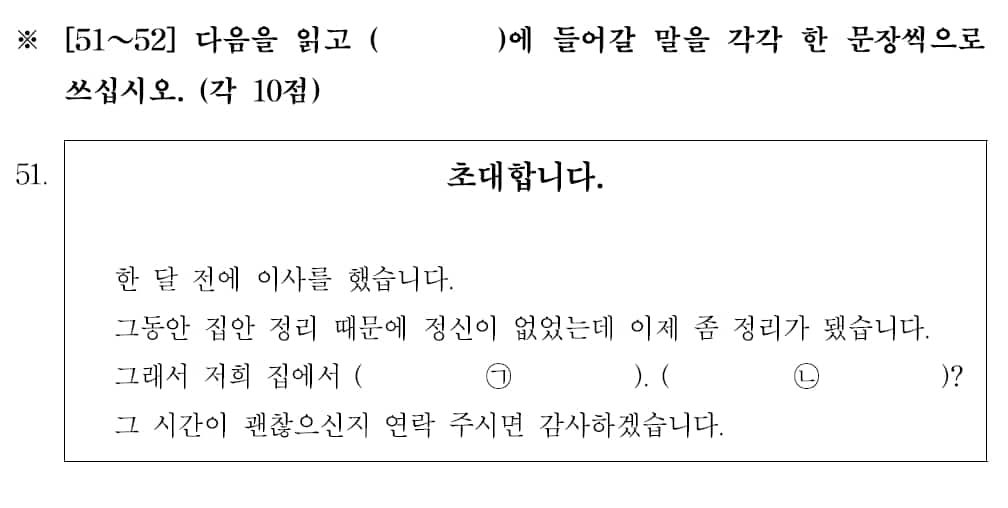
[contact-form][contact-field label=’Name’ type=’name’ required=’1’/][contact-field label=’Email’ type=’email’ required=’1’/][contact-field label=’TOPIK GUIDE Study package Order No. ‘ type=’text’ required=’1’/][contact-field label=’Answer 53.’ type=’textarea’/][contact-field label=’Answer 54.’ type=’textarea’/][/contact-form]
Dr. Satish Satyarthi
Satish is the Founder and CEO of TOPIK GUIDE. He is passionate about languages. He created TOPIK GUIDE website to help Korean language learners learn Korean effectively, succeed in TOPIK test and achieve their goals. He has a PhD in Korean language. His research area has been 'Teaching Korean as a Foreign Language (외국어로서의 한국어교육)'. He is a Seoul National University (GKS) alumni. He has been active in Korean language teaching and research for more than 10 years.
are you offering Expert Feedback without buying the package? i mean charging for the service separately, or charging for feedback for each essay sent. I think that way will be more convenient for people who only need to check their writing…
Currently we are offering this service only to those who purchase our study package but we are planning to offer it as a separate service soon.
I’m really impressed by Expert Feedback but I wonder if every week will have different questions and different topics for us to write or this is the only one that you offer? Is it ok if I wrote about another topic and send to you for the helping? I’m preparing for the topik test in March and I want to improve my listening skill, can your book help me that? I’m very appreciated if you can reply my comment. Thank you.
We have separate video tutorials for listening sections of TOPIK and they will definitely help you. We offer free feedback on two essays on any topic of your choice. But someone requests are we give brief feedback on additional essays as well.
So do you give free feedback on only two essays?
Session expired
Please log in again. The login page will open in a new tab. After logging in you can close it and return to this page.

Hailey Van Lith writing essays during the Olympics
2024 Theses Doctoral
Three Essays in Applied Microeconomics and Behavioral Economics
Campbell, Zakary Adam
This thesis consists of three chapters. The first chapter examines the impact of judicial discretion and left-digit bias on criminal sentencing outcomes. Judicial discretion allows judges to make nuanced decisions, taking into account details of legal cases that are not directly covered by law. However, judicial discretion can also expose behavioral biases and lead to irrational decision-making. I test for the existence of a particular behavioral bias: age-based left-digit bias. Specifically, I use a regression discontinuity design to test for changes in sentencing decisions occurring on an offender's 20th birthday using data on sentencing decisions from the state of Pennsylvania. I find that an offender sentenced just after his/her 20th birthday is 3.5 percentage points more likely to be sentenced to incarceration than an offender sentenced just before his/her 20th birthday. I test for evidence of conscious mechanisms underlying this effect and find no such evidence, leaving an unconscious bias as the best available explanation. Chapter two examines the impact of highly publicized police killings of black individuals on the racial gap in birth outcomes. Police killings of Black Americans are increasingly being met with significant media coverage and public response, including civil unrest. Given the frequency with which these events occur, it is vital to understand both their direct and indirect impacts. Using national birth certificate data and an event study design, I test for the impact of high-profile police-involved killings of Black Americans on racial disparities in maternal stress levels and birth outcomes. I find a large, statistically significant, and persistent increase in gestational hypertension of Black mothers relative to White mothers, strongly indicating an increase in the racial gap in maternal stress following these high-profile killings. I find limited evidence of an accompanying effect on the racial gap in birth outcomes. However, many existing papers similarly find no impacts of maternal stress on birth outcomes while simultaneously finding significant impacts on later-life outcomes, leaving room for additional future work based on these findings. How does the content of public communication by elected representatives change in response to highly salient, politically polarizing events? In Chapter 3, I examine this question using the text of tweets from members of the U.S. House of Representatives and the U.S. Senate, an n-gram text regression model and sentiment analysis alogorithms, and an event study design focused on mass shootings in the U.S. Observable effects on communication are concentrated on the day of and the day following a mass shooting. Republican members of Congress exhibit a reduced tweet frequency relative to Democratic members of Congress in the immediate aftermath of a shooting, while Democratic members of Congress speak with a more clearly differentiated Democratic vocabulary. Members from both parties speak with a more negative vocabulary. With Republicans collectively disengaging and Democrats collectively highlighting their partisan identification, this may suggest that Democrats are taking advantage of an opportunity for a political and/or policy win while Republicans in the same period are choosing to avoid additional political and/or policy losses.
Geographic Areas
- Pennsylvania
- United States
- Microeconomics
- Human behavior--Economic aspects
- African Americans--Violence against
- African Americans--Health and hygiene
- African American mothers
- Fertility, Human--Social aspects
- Judicial process
- Mass shootings
- United States. Congress. House
- United States. Congress. Senate

More About This Work
- DOI Copy DOI to clipboard
Advertisement
Supported by
An Olympics Scene Draws Scorn. Did It Really Parody ‘The Last Supper’?
Some church leaders and politicians have condemned the performance from the opening ceremony for mocking Christianity. Art historians are divided.
- Share full article

By Yan Zhuang
A performance during the Paris Olympics’ opening ceremony on Friday has drawn criticism from church leaders and conservative politicians for a perceived likeness to Leonardo da Vinci’s depiction of a biblical scene in “The Last Supper,” with some calling it a “mockery” of Christianity.
The event’s planners and organizers have denied that the sequence was inspired by “The Last Supper,” or that it intended to mock or offend.
In the performance broadcast during the ceremony, a woman wearing a silver, halo-like headdress stood at the center of a long table, with drag queens posing on either side of her. Later, at the same table, a giant cloche lifted, revealing a man, nearly naked and painted blue, on a dinner plate surrounded by fruit. He broke into a song as, behind him, the drag queens danced.
The tableaux drew condemnation among people who saw the images as a parody of “The Last Supper,” the New Testament scene depicted in da Vinci’s painting by the same name. The French Bishops’ Conference, which represents the country’s Catholic bishops, said in a statement that the opening ceremony included “scenes of mockery and derision of Christianity,” and an influential American Catholic, Bishop Robert Barron of Minnesota, called it a “gross mockery.”
The performance at the opening ceremony, which took place on and along the Seine on Friday, also prompted a Mississippi-based telecommunications provider, C Spire, to announce that it would pull its advertisements from Olympics broadcasts. Speaker Mike Johnson described the scene as “shocking and insulting to Christian people.”
The opening ceremony’s artistic director, Thomas Jolly, said at the Games’ daily news conference on Saturday that the event was not meant to “be subversive, or shock people, or mock people.” On Sunday, Anne Descamps, the Paris 2024 spokeswoman, said at the daily news conference, “If people have taken any offense, we are, of course, really, really sorry.”
We are having trouble retrieving the article content.
Please enable JavaScript in your browser settings.
Thank you for your patience while we verify access. If you are in Reader mode please exit and log into your Times account, or subscribe for all of The Times.
Thank you for your patience while we verify access.
Already a subscriber? Log in .
Want all of The Times? Subscribe .

COMMENTS
TOPIK Beginner Writing Topics & Samples (10-20).DOCX. So, I've decided to collect ALL the previous TOPIK Writing topics and examples provided by www.topik.go.kr into a single document. However, since there are so many, I've decided to split the larger document into 2 smaller parts with 10 previous tests each (TOPIK Writing began from test 10).
In the previous post, we looked at the evaluation system of TOPIK essay section.If you remember I had left you with three model essays which were written by three different students in 25th TOPIK. Here in this post, we will see how the examiners evaluated and graded those papers.
Memorize transition words and phrases. These are words like 그런데, 그리고, 게다가, 반면에, etc., that link one sentence to the next or one paragraph to the next. When you're reading essays, news articles, or even TOPIK passages, take a second to identify and write down these transition words/phrases. Memorize them and practice ...
Learning a language through stories boosts your confidence and gives you motivation to reach the next level of study. Once you know the beginner basics of the language, it is a very rewarding feeling to be able to draw on that knowledge to read, or even write, your own Korean short story. Finally, stories transmit cultural values and information.
The following essays are some samples from the students in my past Korean classes. These examples are taken directly from students' actual work and demonstrate great efforts in writing. However, naturally the sample essays may include possible grammar mistakes and non-native style of expressions. Click to view students' Korean essays from each ...
In one box, write one character. Only for the alphabet (lowercase) and Arabian numbers should 2 characters be used in one box, but every sentence mark should also have its own box. (Uppercase alphabet characters also need their own box.) For paragraphs, the first box should be left blank and you should start writing from the second box.
So it does not influence your marks if someone has written a really great essay with native Korean level grammar and words. If you have written a good essay with proper use of beginner level vocabulary and grammar, you can get all 30 marks. But yes, the sentences should not be unnaturally simple and short. For example: 제 친구는 A입니다.
The essay writing part (the paragraph writing based on a graph and the long essay) is challenging for almost all TOPIK test takers. ... The problem is not that the test takers don't know enough grammar and vocabulary to write a good paragraph or essay in Korean. We found that many of the test takers were pretty good at grammar and vocabulary ...
A transitional phrase can be used to make your message transition smoothly from one sentence to the next. If you just write a string of sentences without any transitional phrases, your essay can end up sounding awkward and robotic without a natural flow. In this article, I have compiled a list of 30 Korean transitional phrases that will prove ...
콩쥐팥쥐 | Kongjwi and Patjwi. Kongjwi is a kind girl mistreated by her stepmother and stepsister. Her goodness brings magical help and leads to a life-changing meeting. Read More. intermediate.
Try writing simple sentences, then gradually move on to paragraphs and, eventually, entire essays. There are also many websites and apps that offer structured practice for the modern Korean alphabet. For instance, some websites allow you to write in Korean and get feedback from native speakers.
Get original essay. Seoul is the heart of South Korea. This forward-thinking city is a blending of technology and traditional culture. Since Seoul is truly a 24/7 city, it offers vibrant nightlife. Street food and markets in the city are also worth exploring. City views from N Seoul Tower (236m) and Lotte Tower (556m) are just amazing.
1) My girlfriend is pretty: My girlfriend은 is pretty. "은" is attached to "my girlfriend" (the subject) 2) The movie was scary = The movie는 was scary. "는" is attached to "the movie" (the subject) We will now switch our focus to using actual Korean words to create sentences ending in 이다. To be: 이다.
691 Words. 3 Pages. Open Document. South Korea is one of the most homogeneous countries in the world, in which it has its own culture, language, and customs that are different from other Asian countries. In South Korea, the citizens greatly value hard work, filial piety, and humility in their daily lives. South Koreans are very proud people in ...
Let's get this Korean reading exercise started! Reading on a new language can be easy as 1-2-3! Photo by Min An from Pexels. OK, let's have the first batch of exercises: Exercise 1. The following Korean words are actually English words, but are borrowed by the Korean language. You only have to match the following words in Hangul, to its ...
K + O + R + E + A = Korea. However, in the Korean language, you will have to place them into specific blocks, which together then form the word. So, in the case of the same word, but in Korean, it would look like this: ㅎ + ㅏ + ㄴ ㄱ + ㅜ + ㄱ = 한국. This is an excellent example of forming the block using both a vertical vowel and a ...
500 Words Essay on South Korea Introduction. South Korea, officially known as the Republic of Korea, is a vibrant nation that has made significant strides in economic development, technological advancement, and cultural exportation over the past few decades. Nestled on the Korean Peninsula in East Asia, South Korea epitomizes a successful blend ...
It's important to learn Korean verb conjugation as you progress in learning Korean. Below is a list of the common conjugations of verbs according to their tenses. Verb + ㅂ니다/습니다 (ㅂ nida/seumnida) = honorific verb, present. Verb + 아요/어요 (ayo/eoyo) = polite/formal verb, present.
TOPIK-Beginner Writing Topics & Samples (21-30).DOCX. So, I've decided to collect ALL the previous TOPIK Writing topics and examples provided by www.topik.go.kr into a single document. However, since there are so many, I've decided to split the larger document into 2 smaller parts with 10 previous tests each (TOPIK Writing began from test 10).
Structure, style and flow of a Korean Essay are different from an English Essay. May be you are just applying the wrong rules and techniques when writing your Korean essay. In last 6 years, ... You will be able to write better sentences and paragraphs in Korean, using your existing knowledge of Korean grammar and vocabulary. ...
Essay Topics. K-pop, also known as Korean pop music, has taken the world by storm in recent years. With its catchy tunes, vibrant choreography, and charismatic performers, it has captured the hearts of millions of fans worldwide. Therefore we will discuss some K-pop essay topics, ideas, and tips for writing a K-pop college essay.
Taekwondo: Korean Art of Defending Yourself and Your Loved Ones. Taekwondo is a Korean martial art, characterized by its emphasis on head-height kicks, jumping and spinning kicks, and fast kicking techniques. The name Taekwondo means the way of the foot and fist. Various martial artists combined the elements of Karate and Chinese martial arts ...
Minumsa Publishing Group has launched the sixth edition of its annual waterproof book series, this time spotlighting essays from its humanities magazine, titled 'Han Pyeon,' which means 'one ...
It's August 1st and that means the application at NYU has officially opened. This year, we've made some pretty big changes to NYU's Common Application to simplify the process for our applicants, and to help us learn a little more about you!. When you start NYU's member questions on the Common App, you'll see 6 sections that you'll need to complete.
The Personal Statement and Supplemental Essays with Foxcroft School. Monday, August 12, 2024 at 12:00 PM until 1:00 PM Eastern Daylight Time UTC -04:00
In the classroom setting, MGT (machine-generated text) usage in student essays presents new and complex challenges that educators must navigate. 1) Educators need to use additional time to not only evaluate student essays, now they have to check if these essays were written by a machine or by them. And this is a very complicated task for them ...
The writing section has no multiple choice questions but just 2 short-answer questions and 2 essay questions. The essay part plays a big role in your TOPIK result as it makes 80% of the whole writing paper. So, if you are planning to appear in Intermediate-Advanced level TOPIK, you should start working on your Korean essay writing skills.
Hailey Van Lith was busy winning a medal, and writing essays during the Olympic Games. The 3x3 basketball player is finishing up her master's degree at LSU and beginning one at TCU, where she'll ...
This thesis consists of three chapters. The first chapter examines the impact of judicial discretion and left-digit bias on criminal sentencing outcomes. Judicial discretion allows judges to make nuanced decisions, taking into account details of legal cases that are not directly covered by law. However, judicial discretion can also expose behavioral biases and lead to irrational decision-making.
Some church leaders and politicians have condemned the performance from the opening ceremony for mocking Christianity. Art historians are divided.